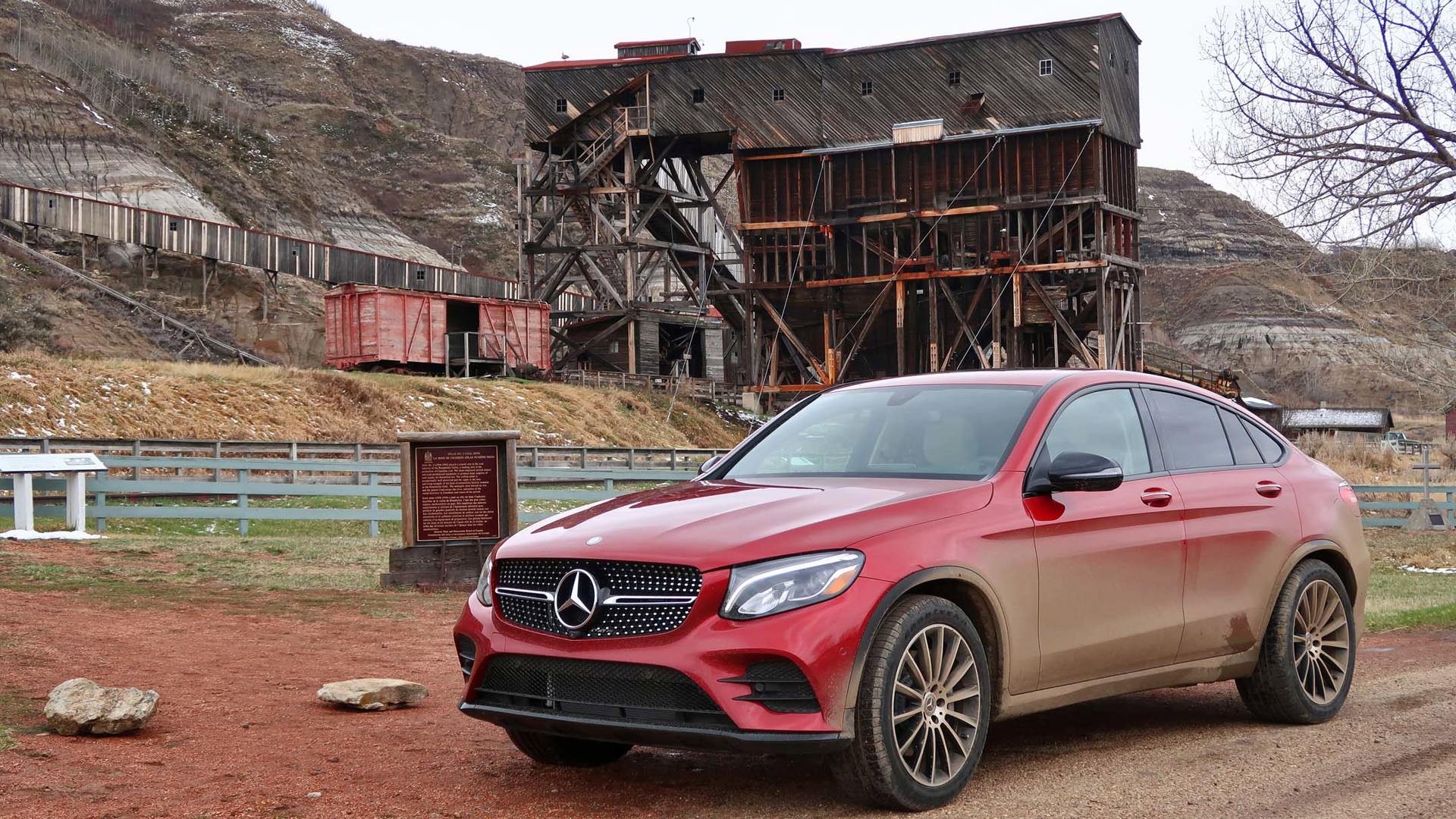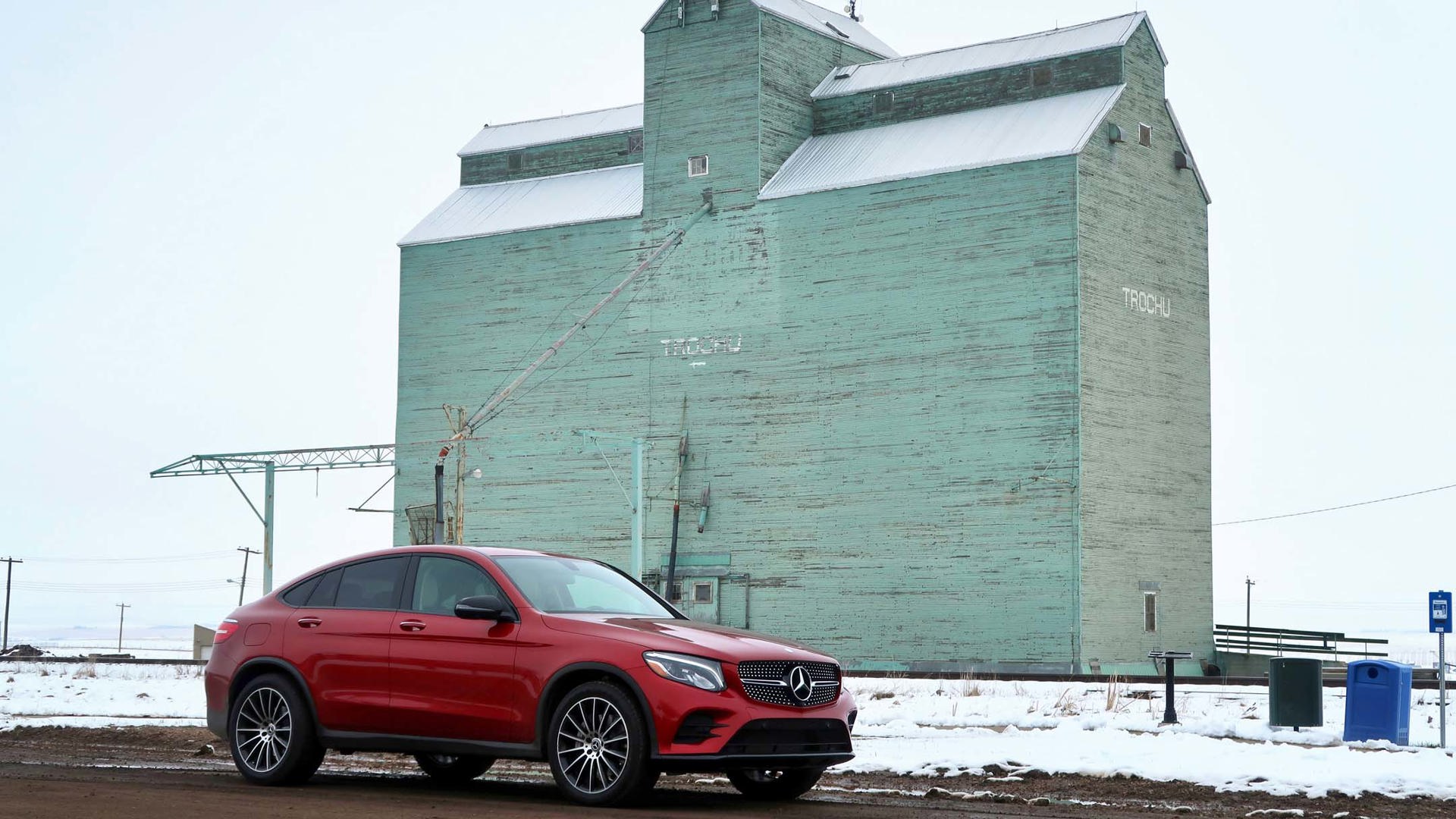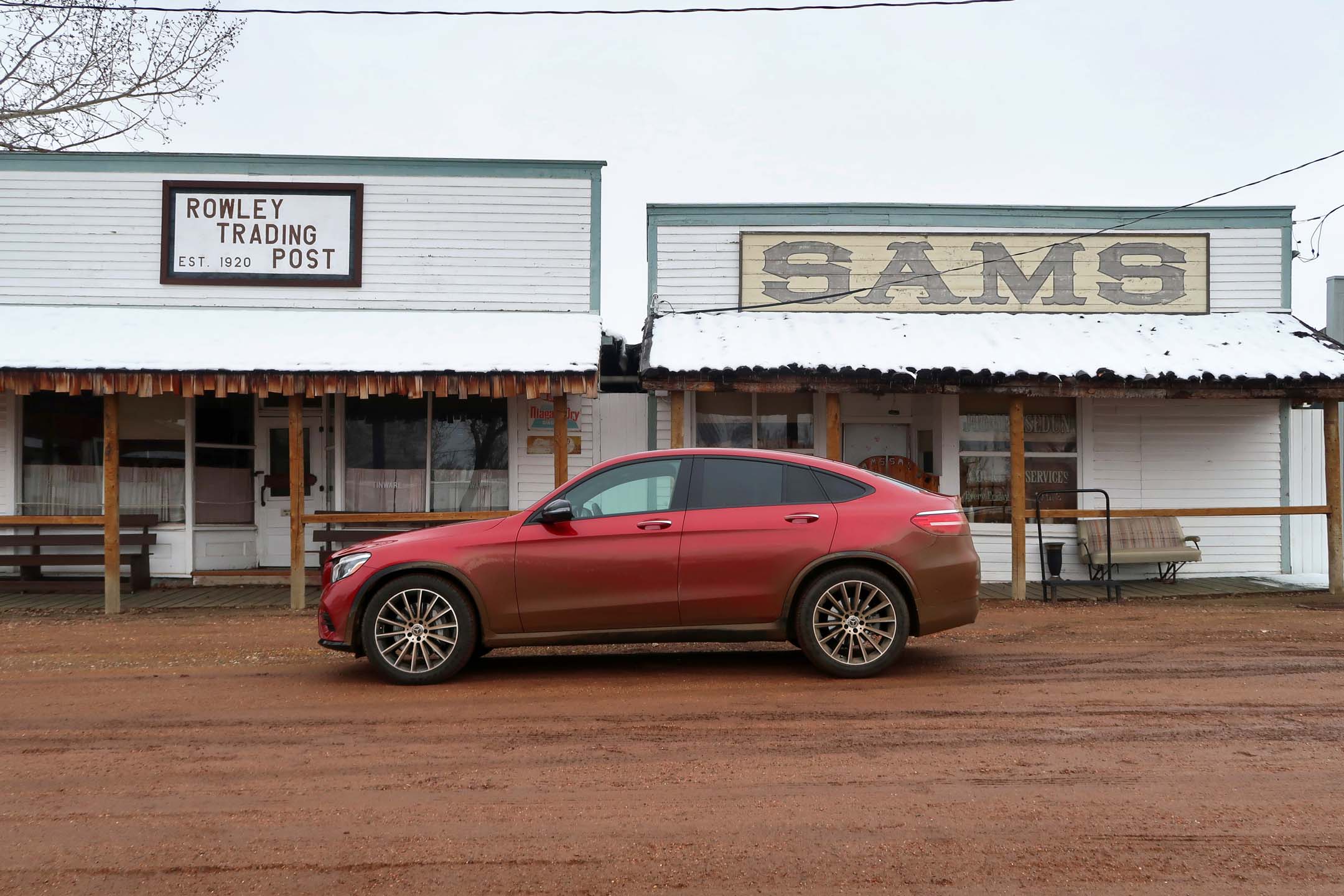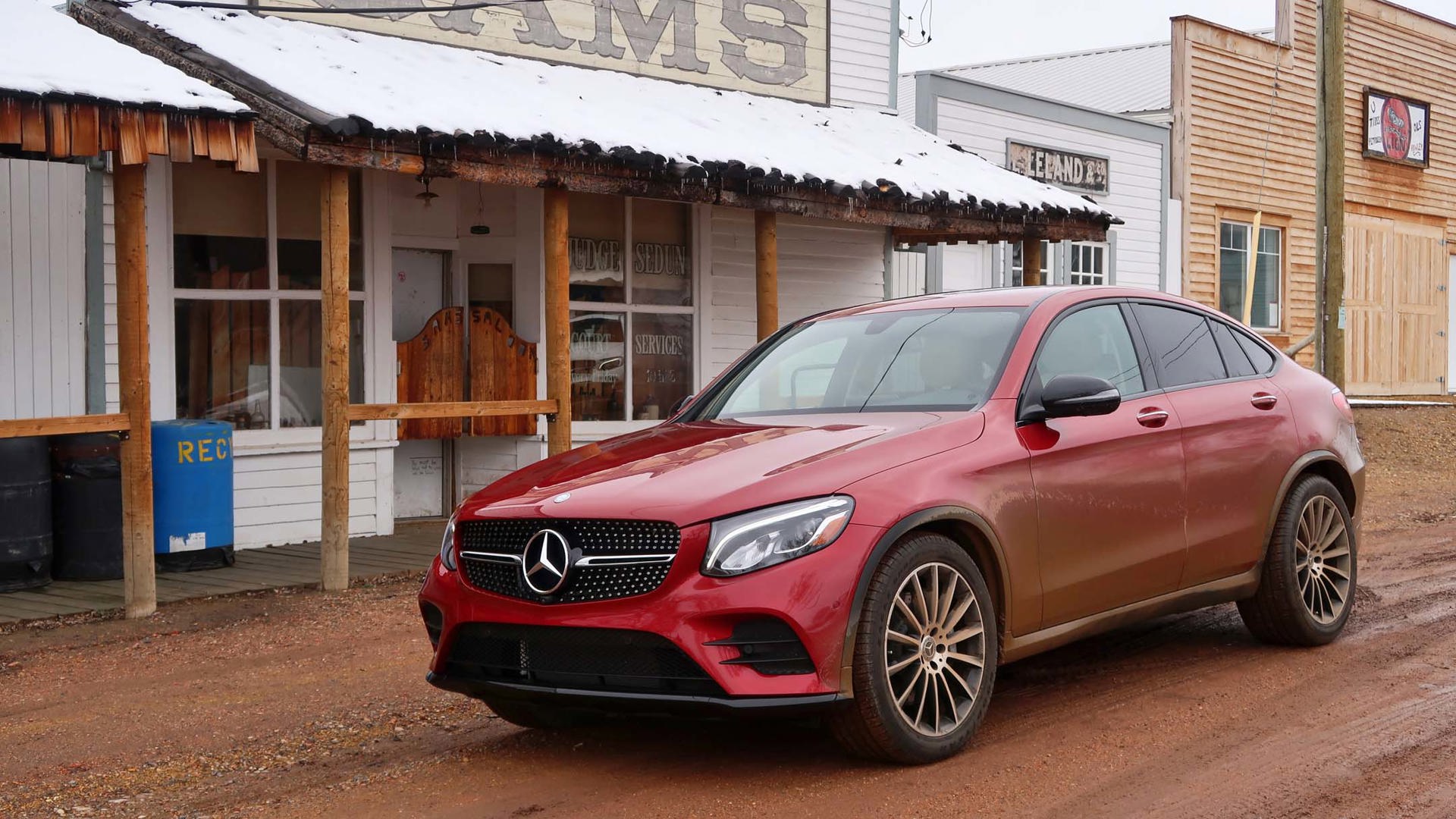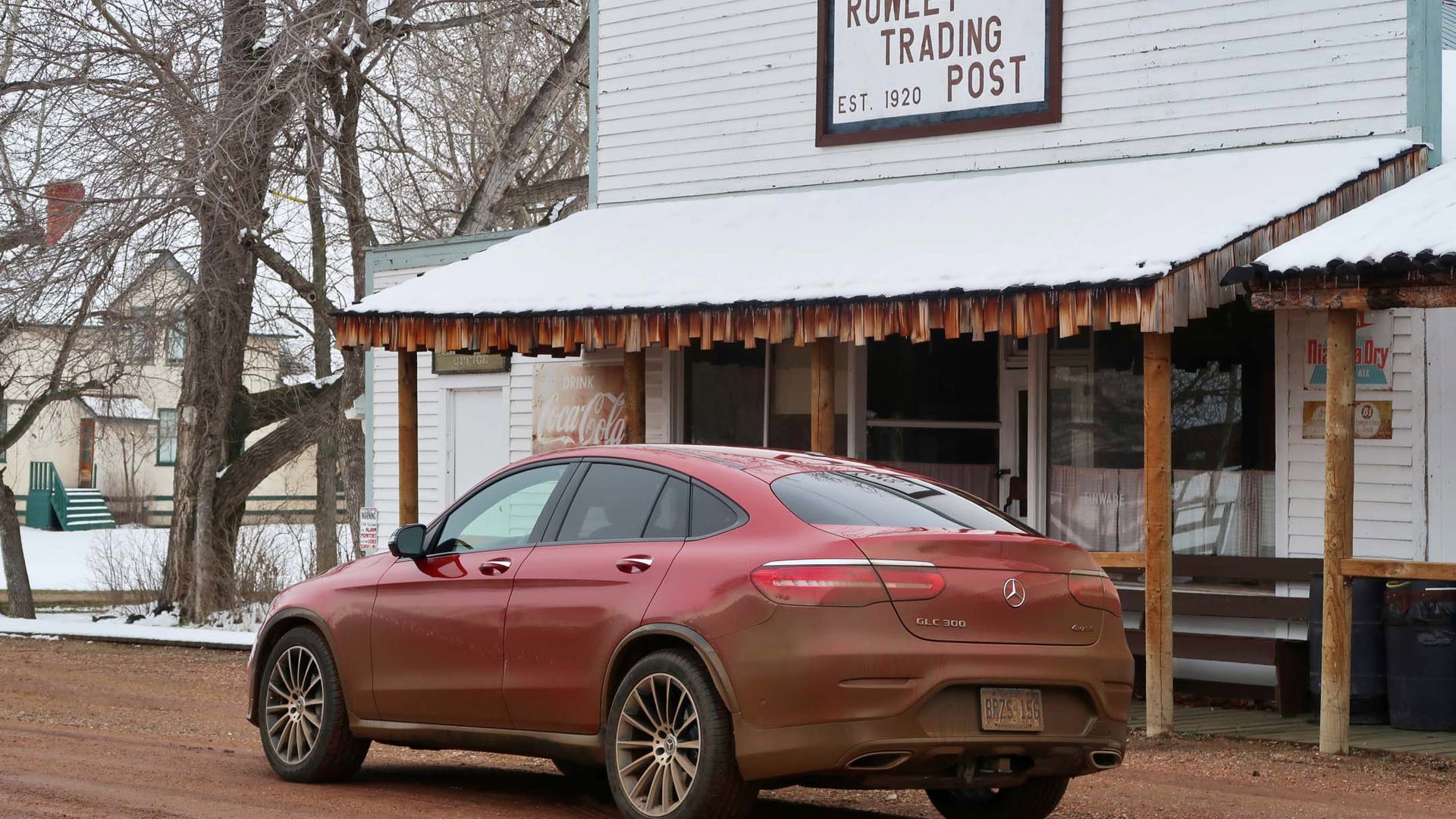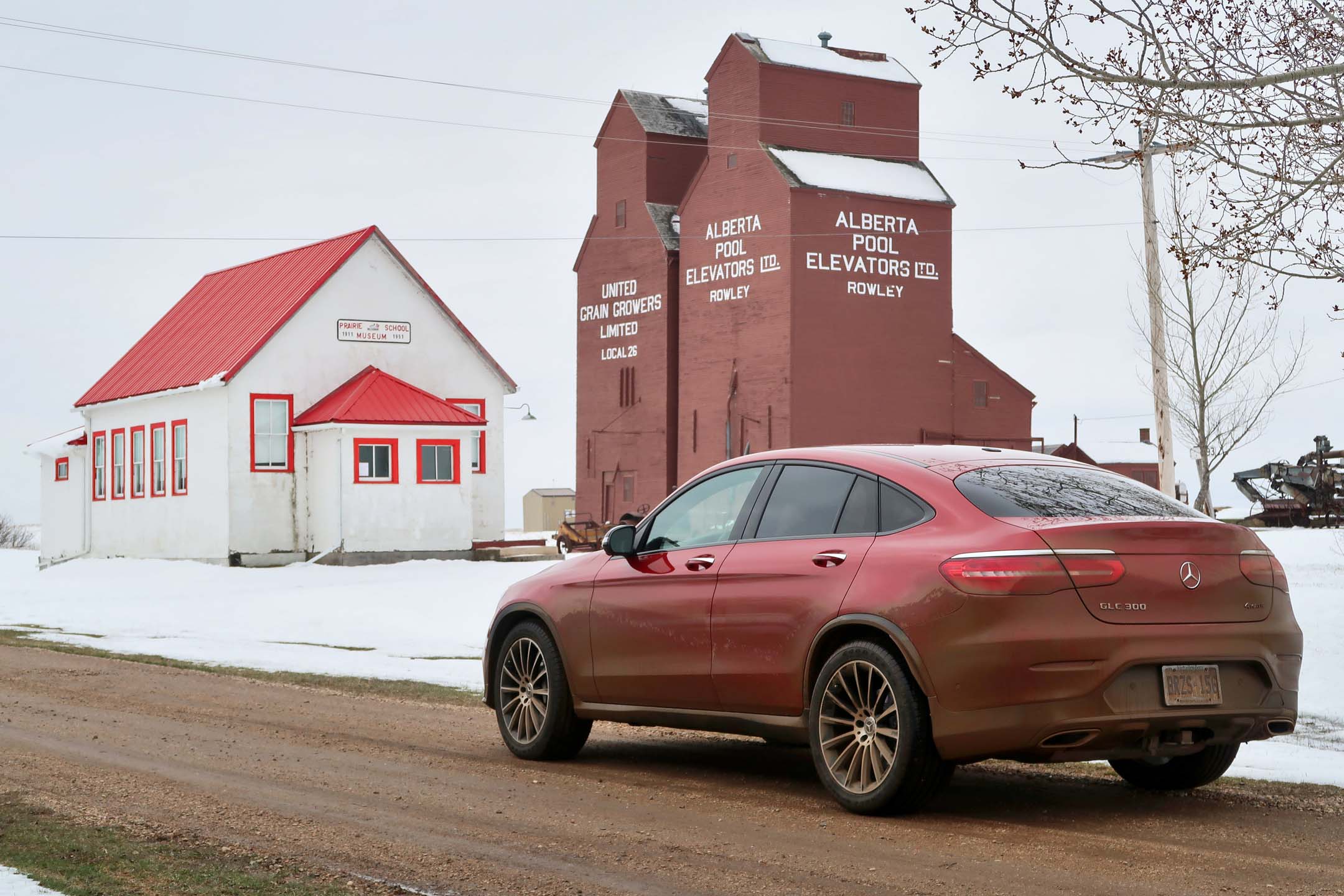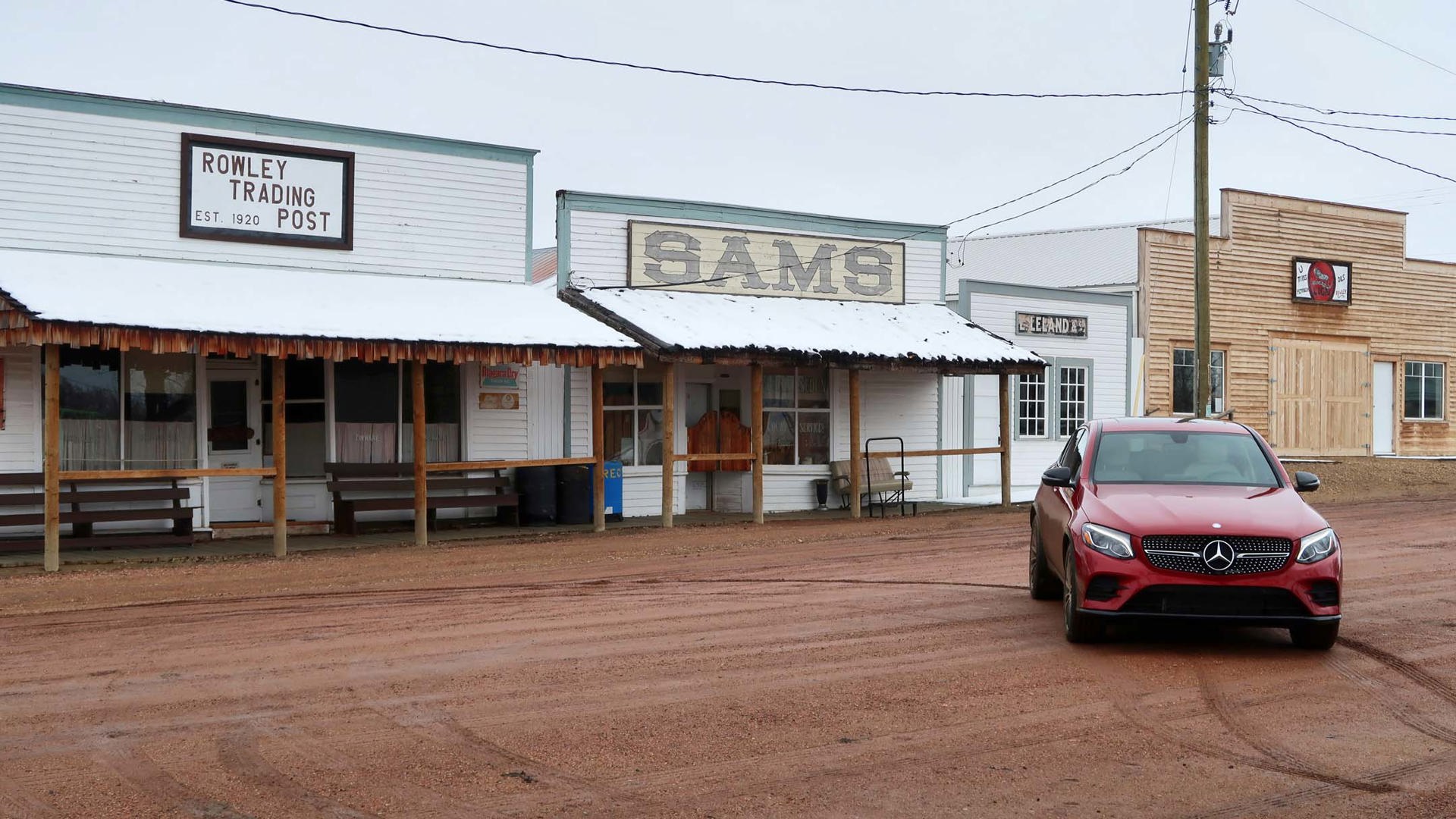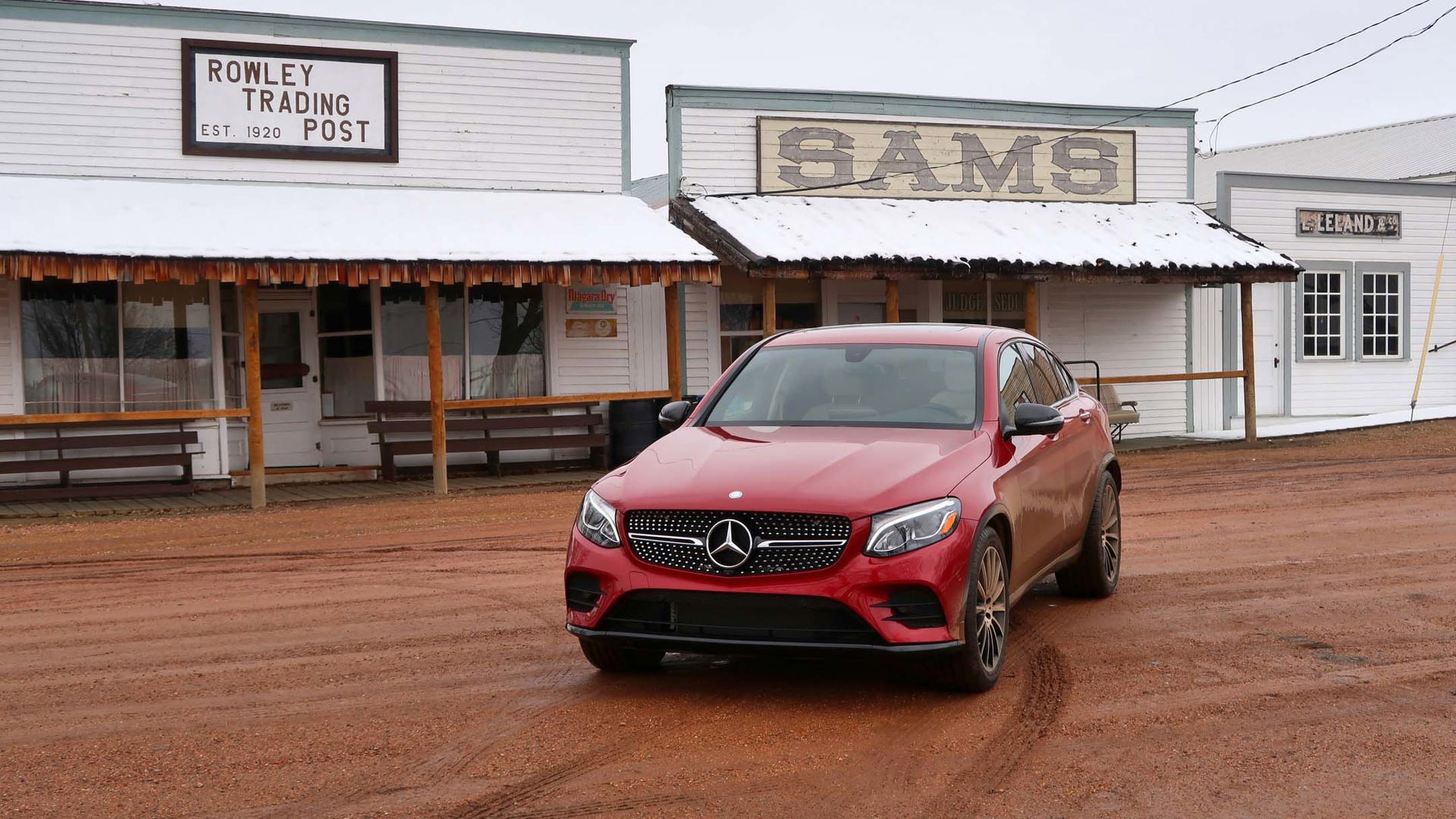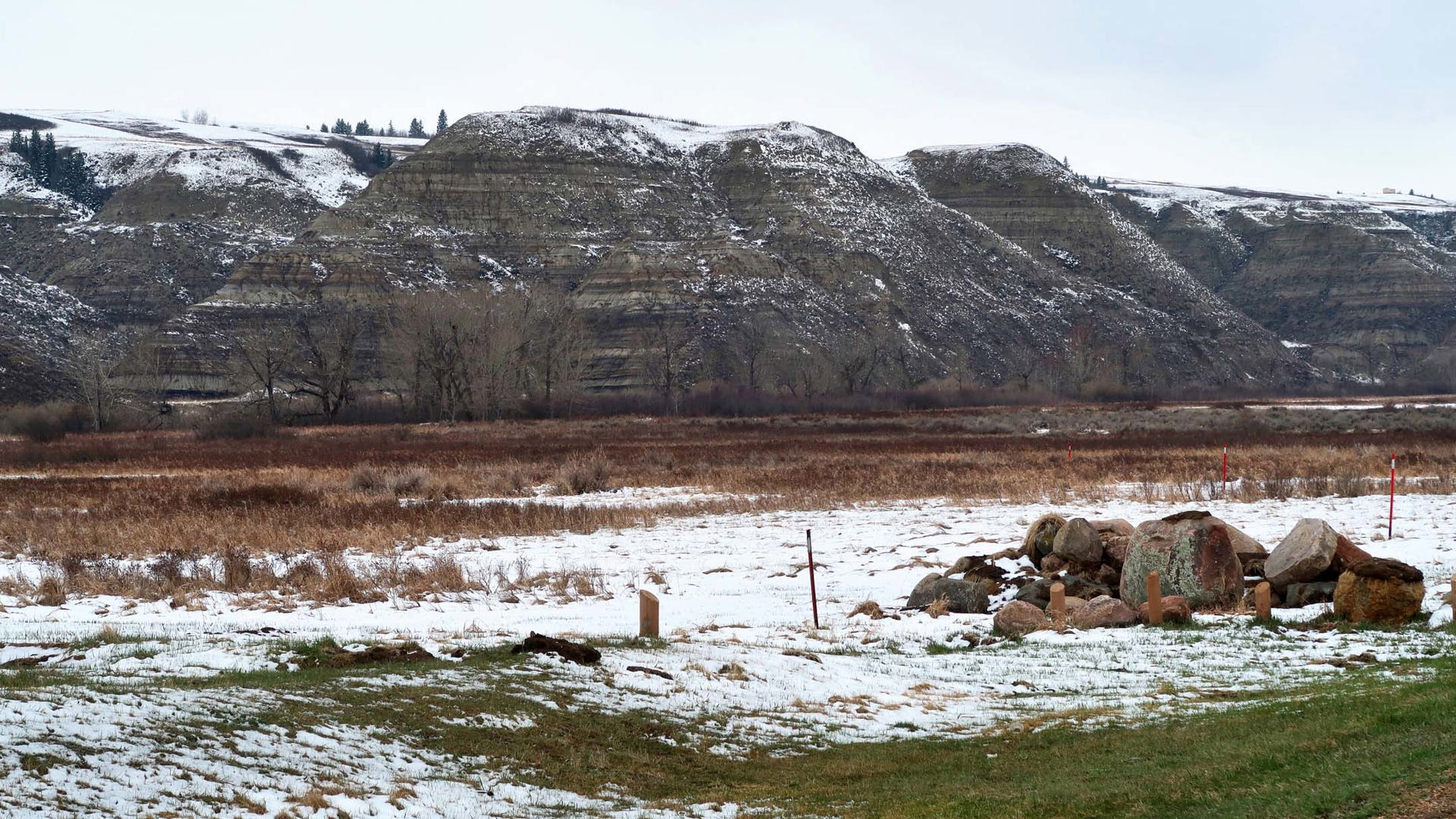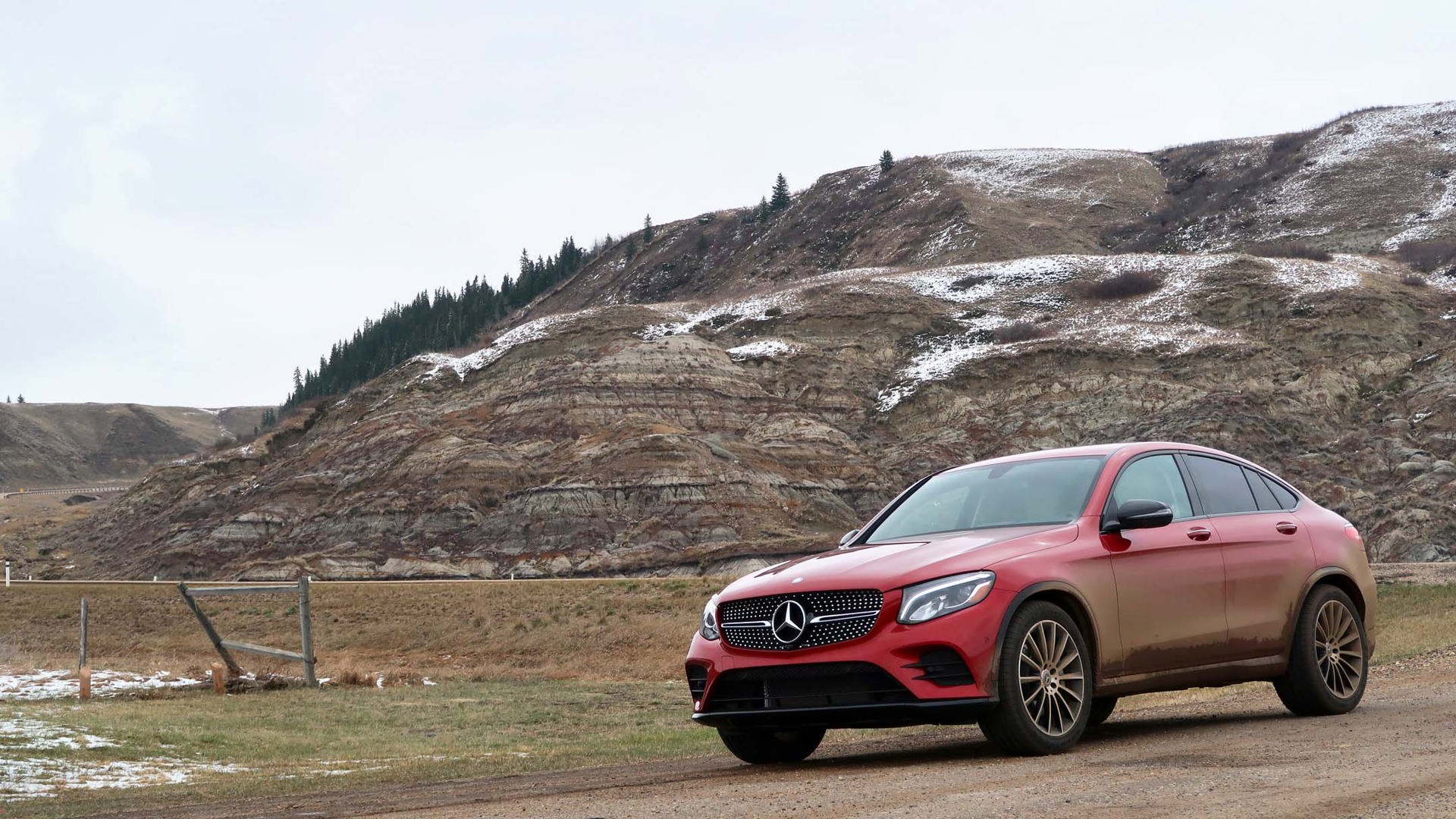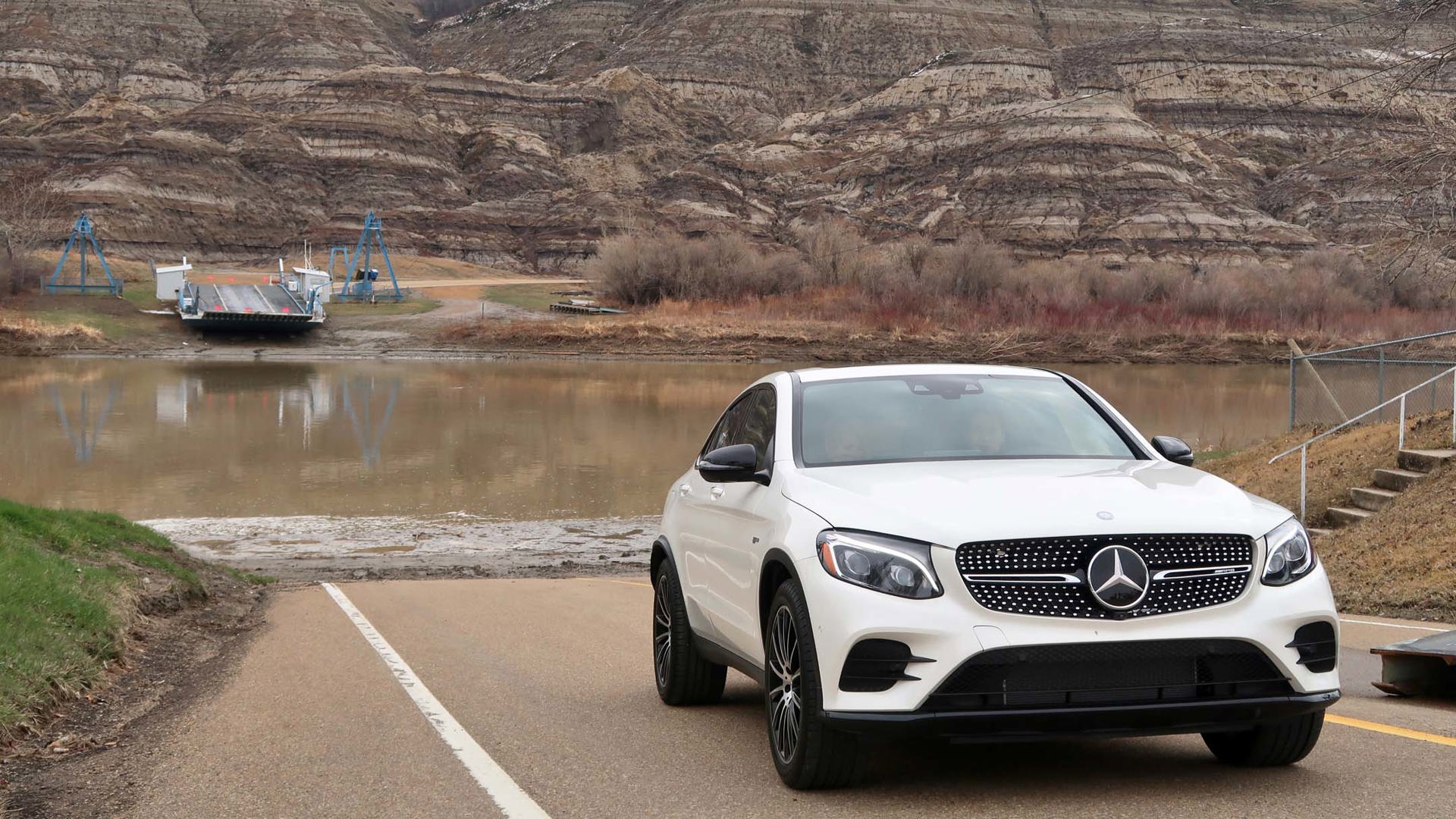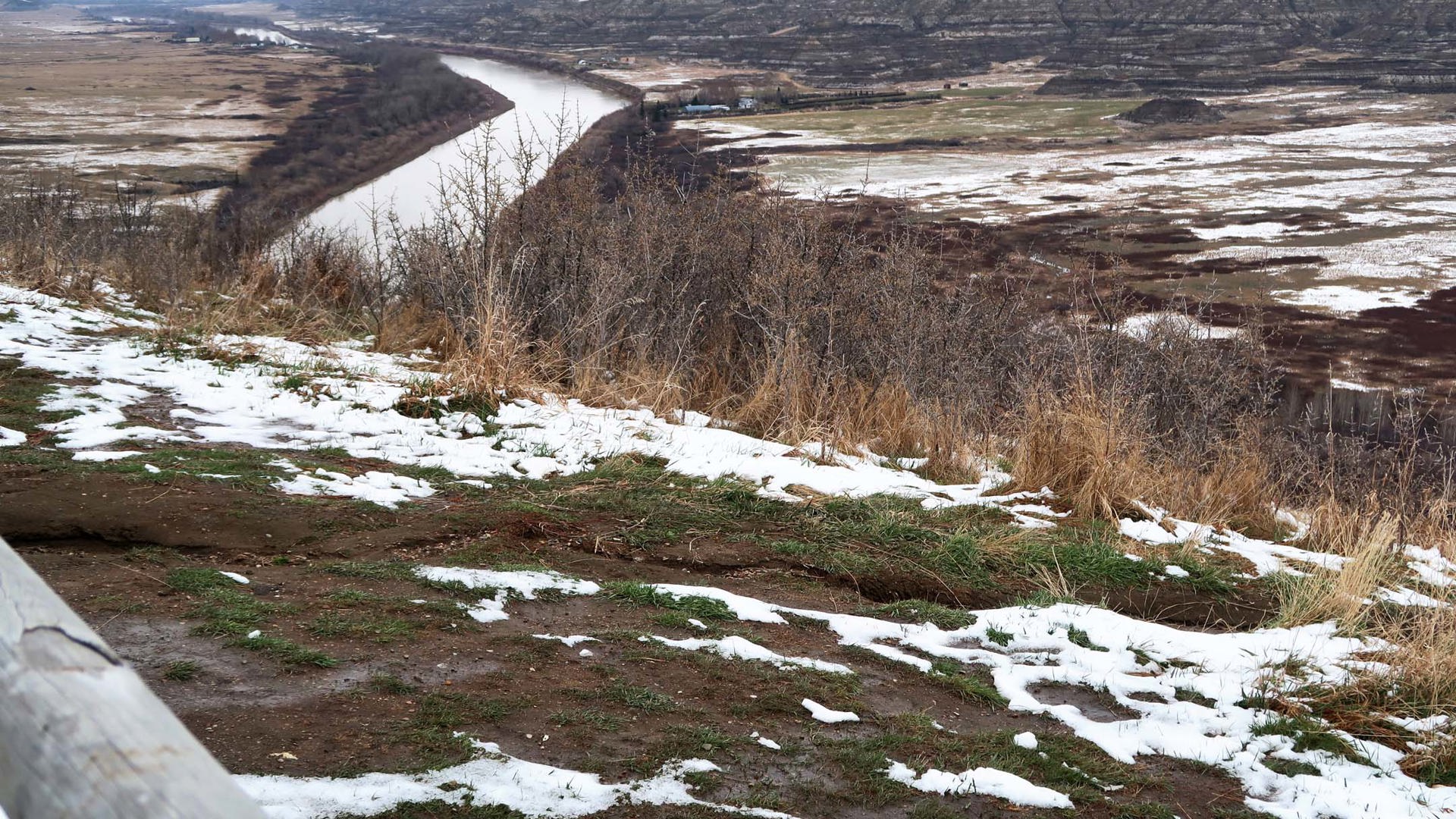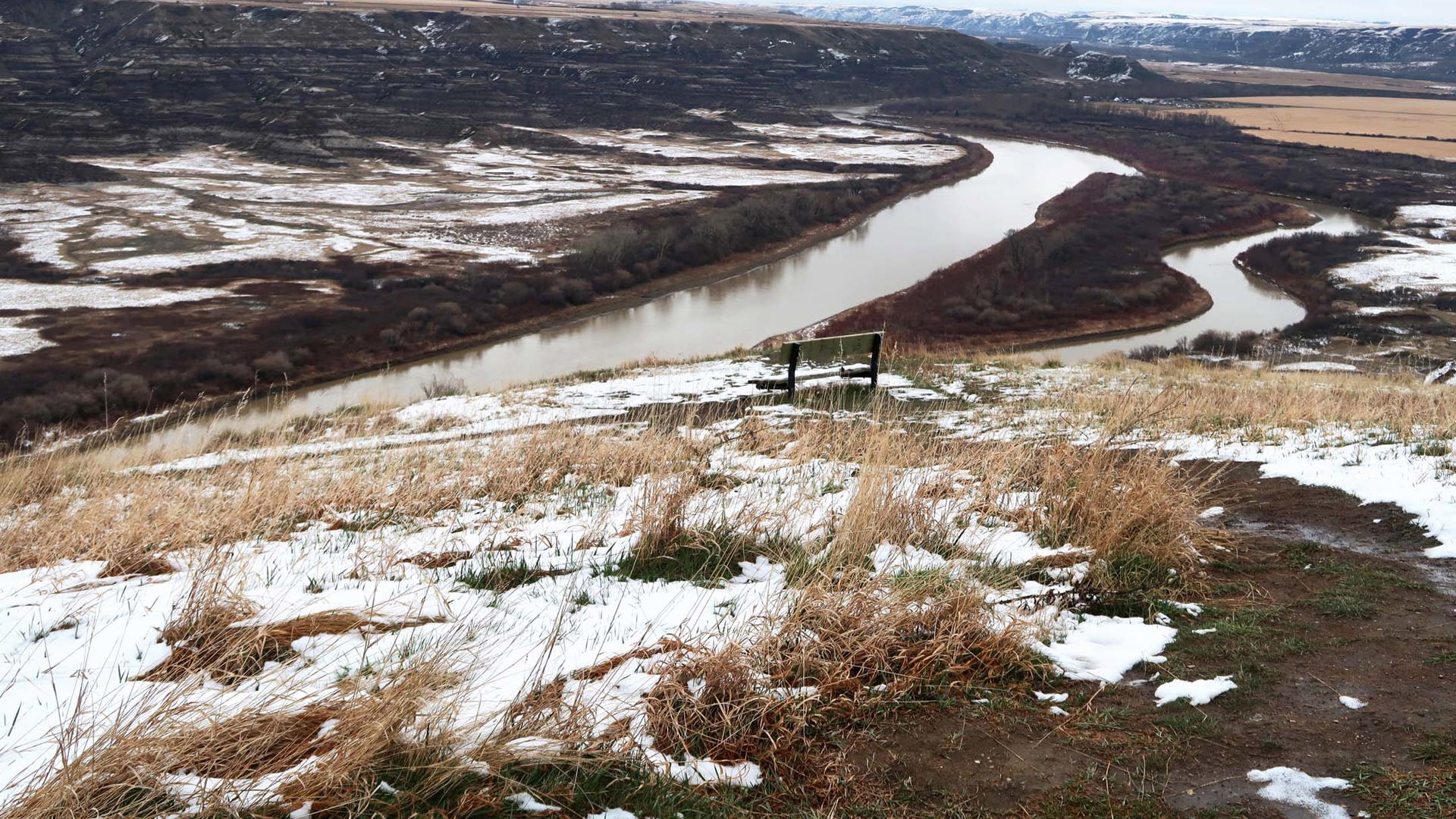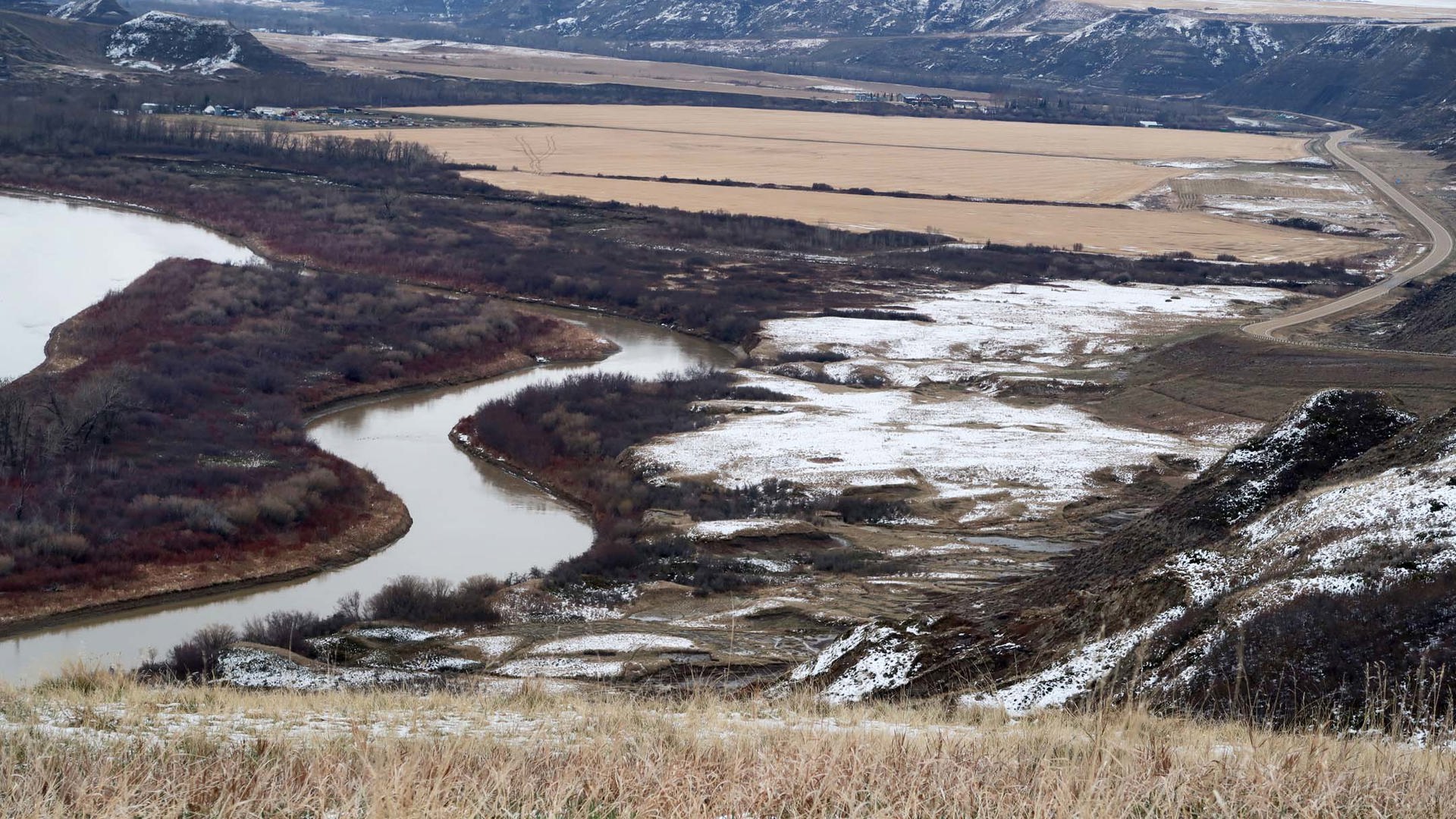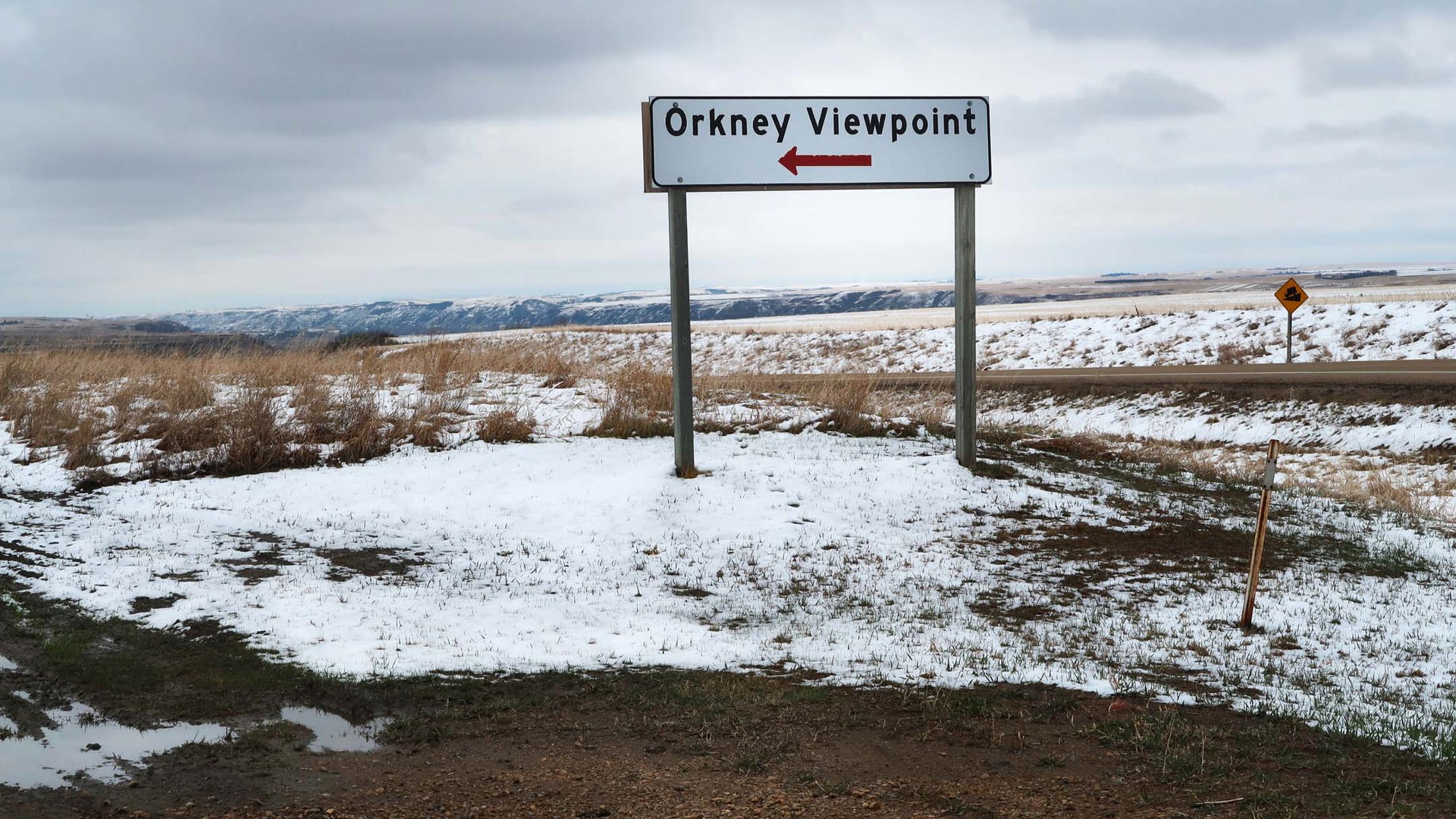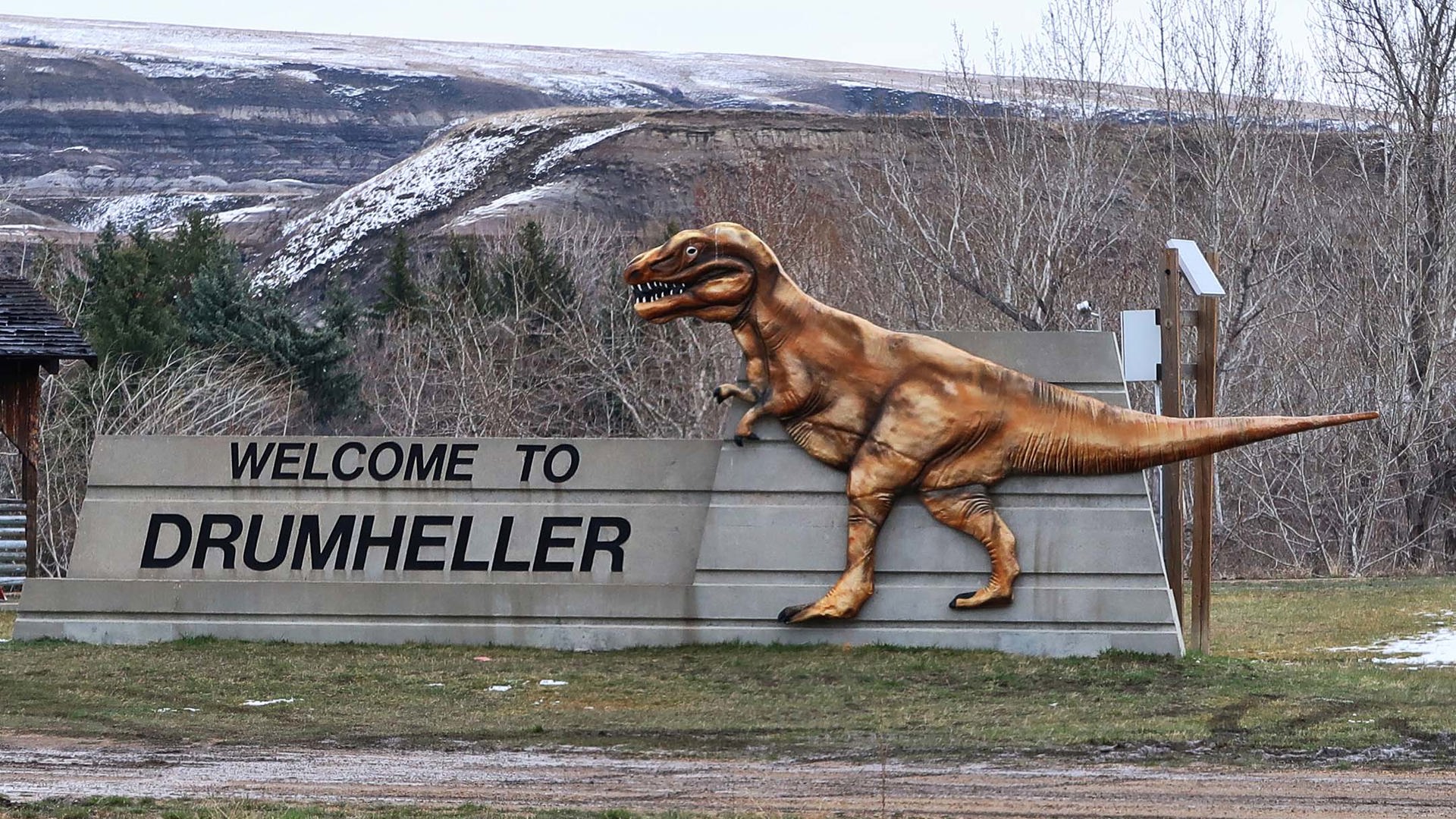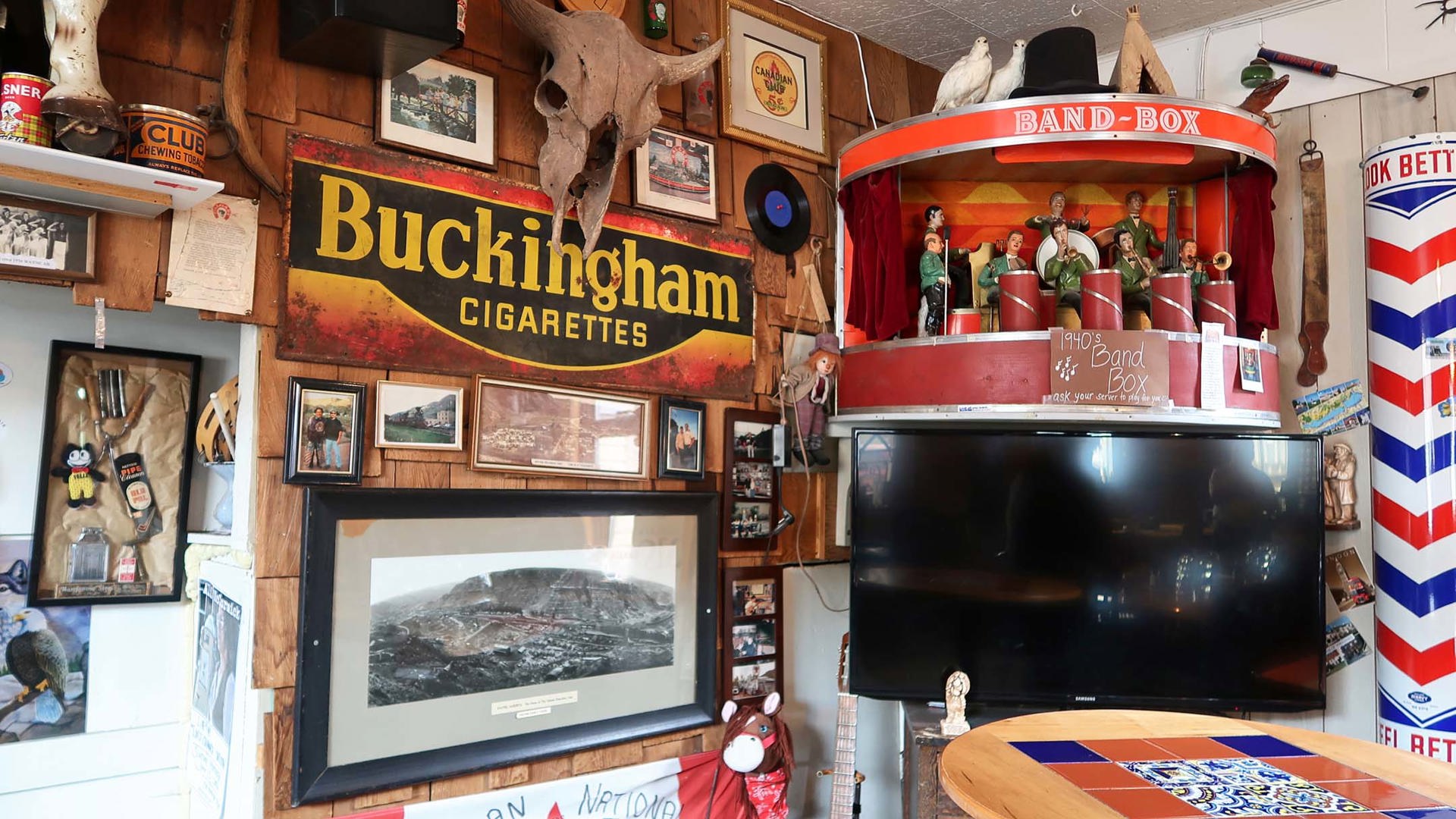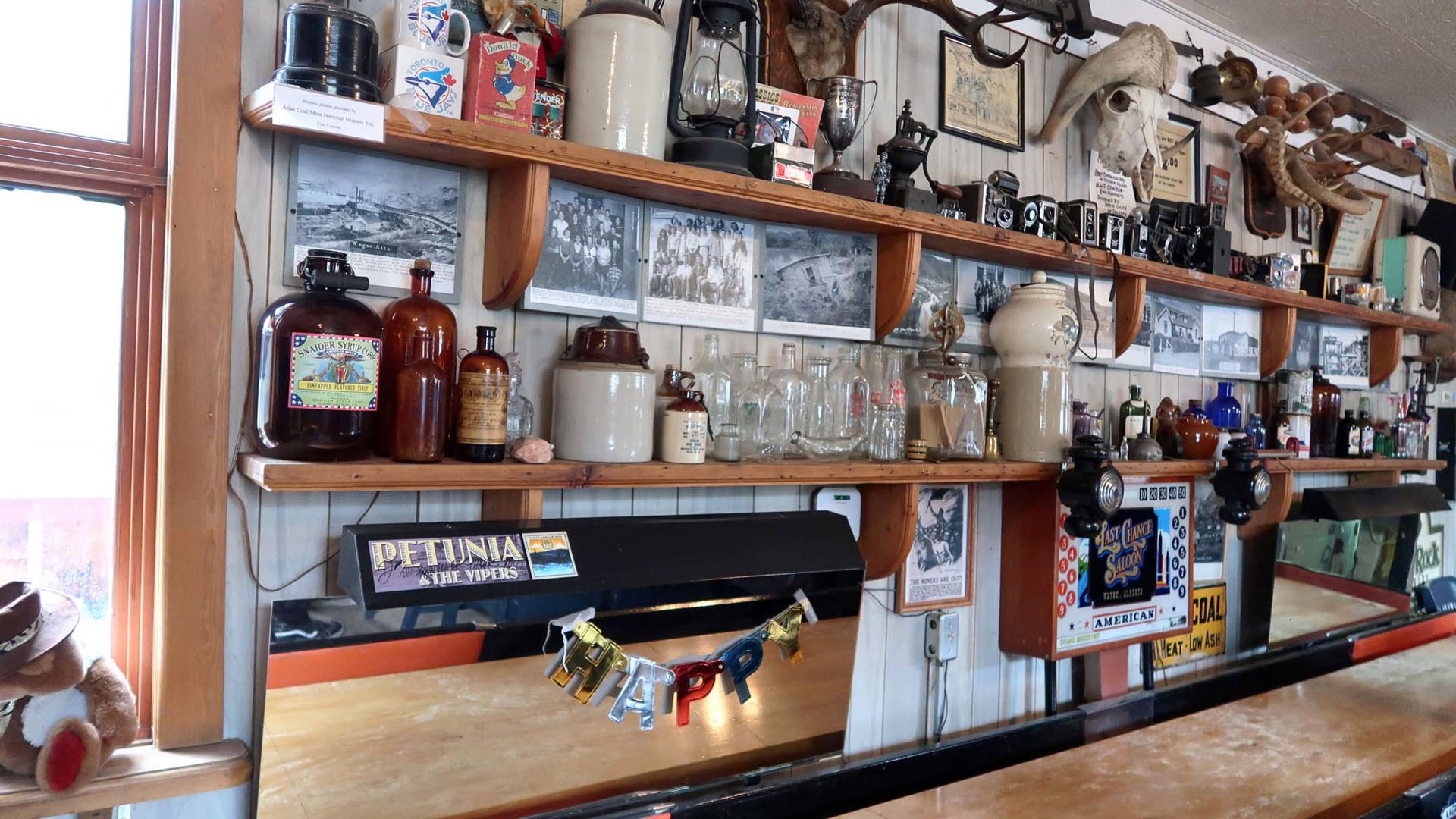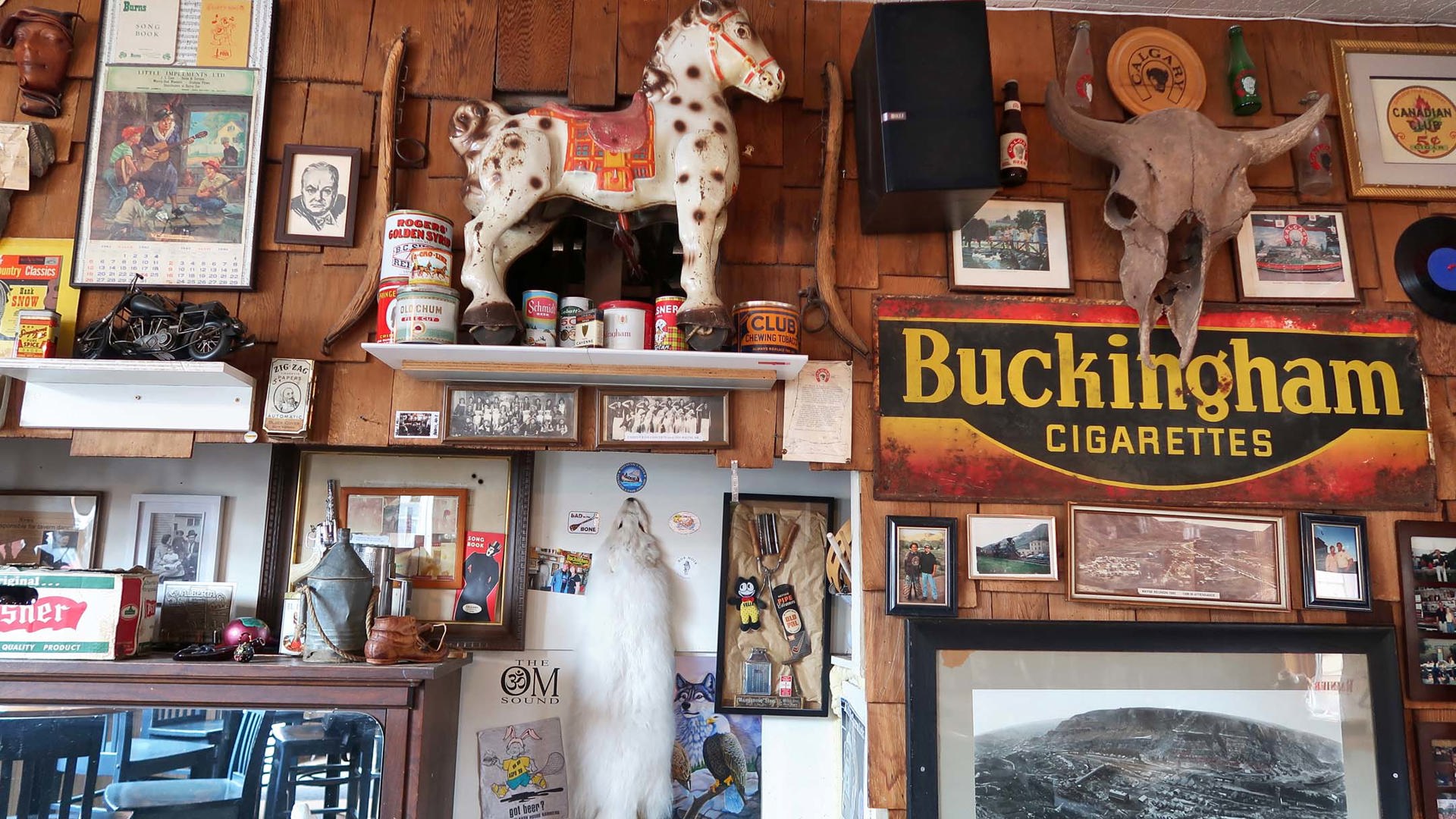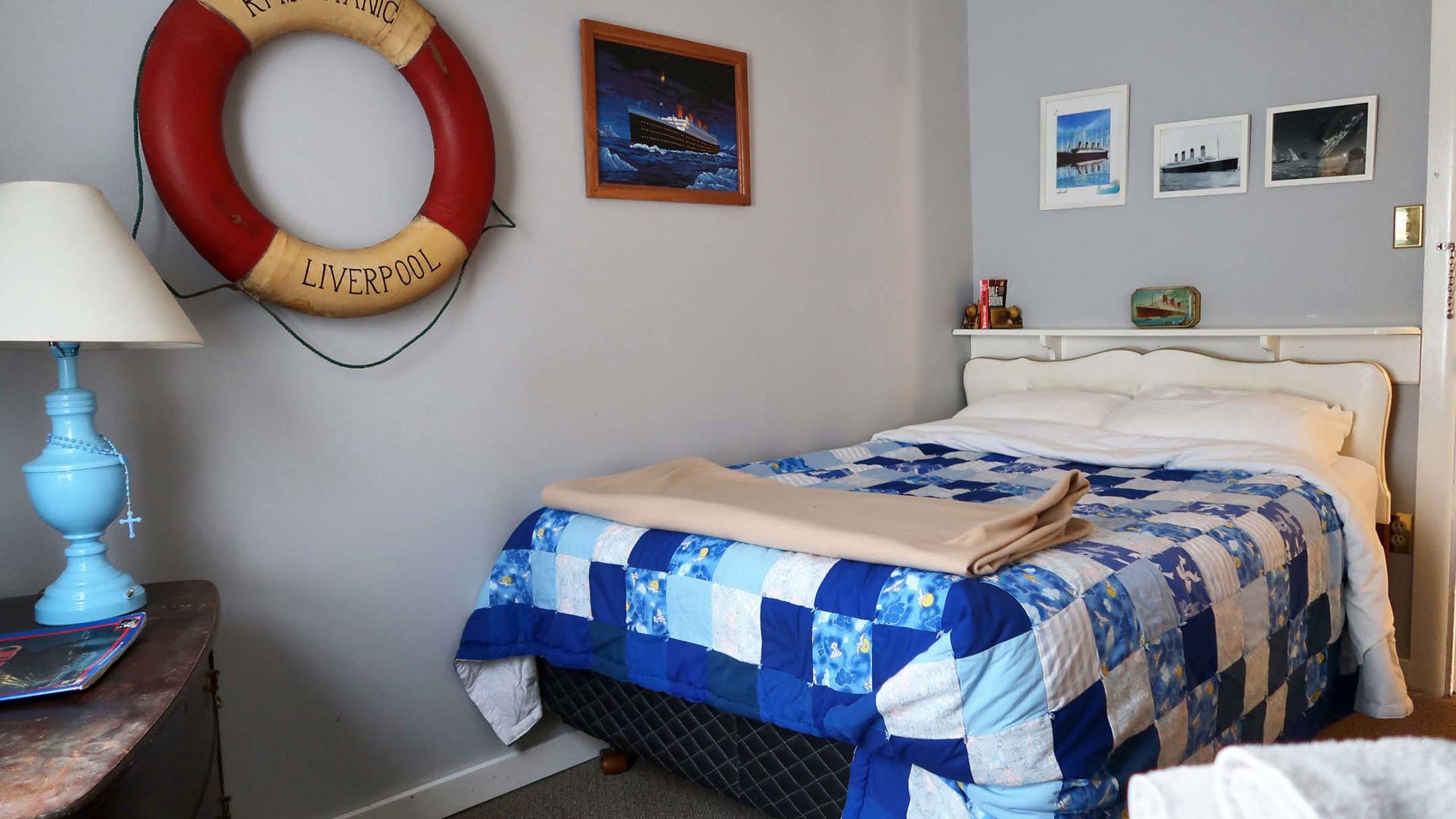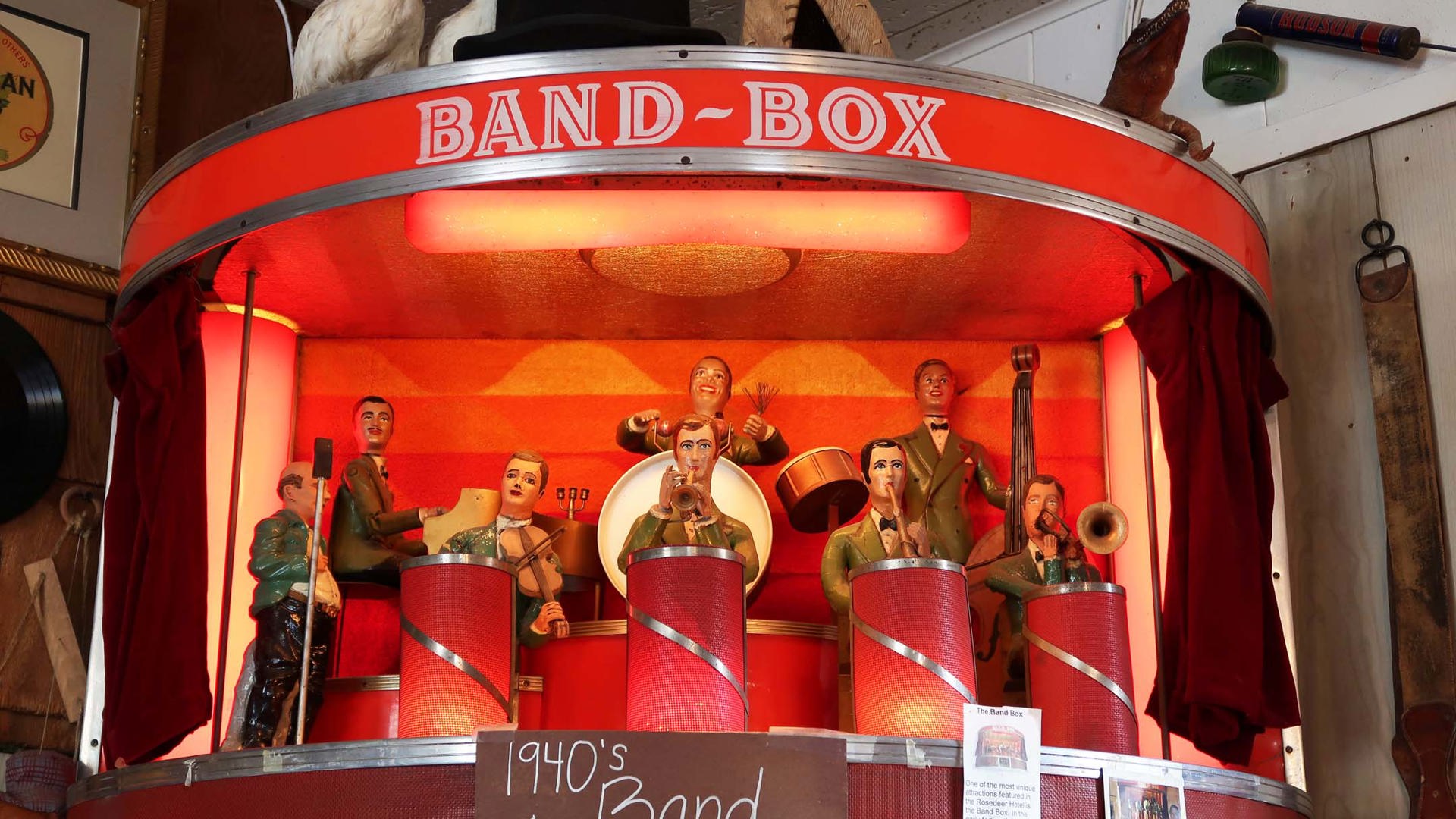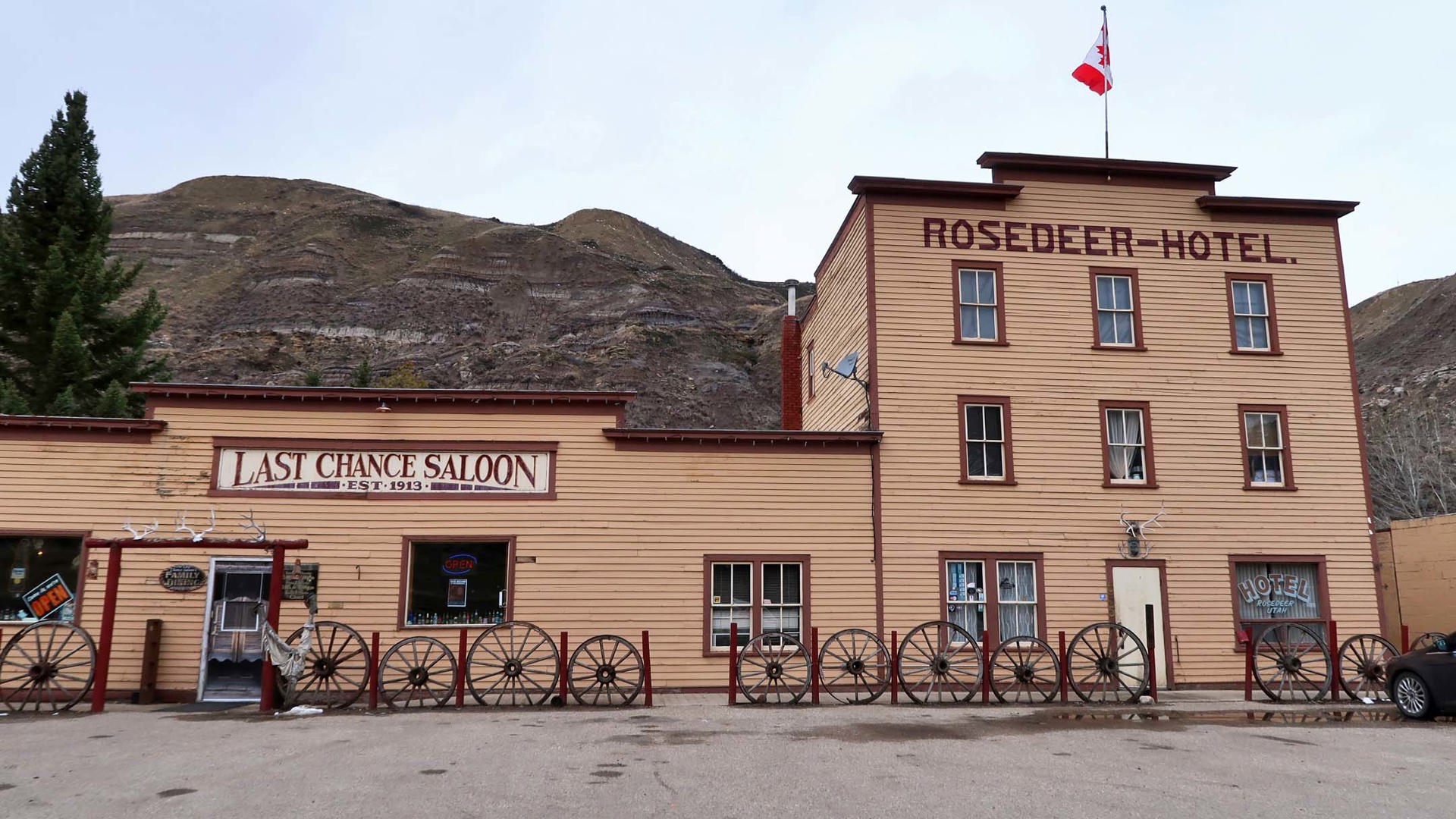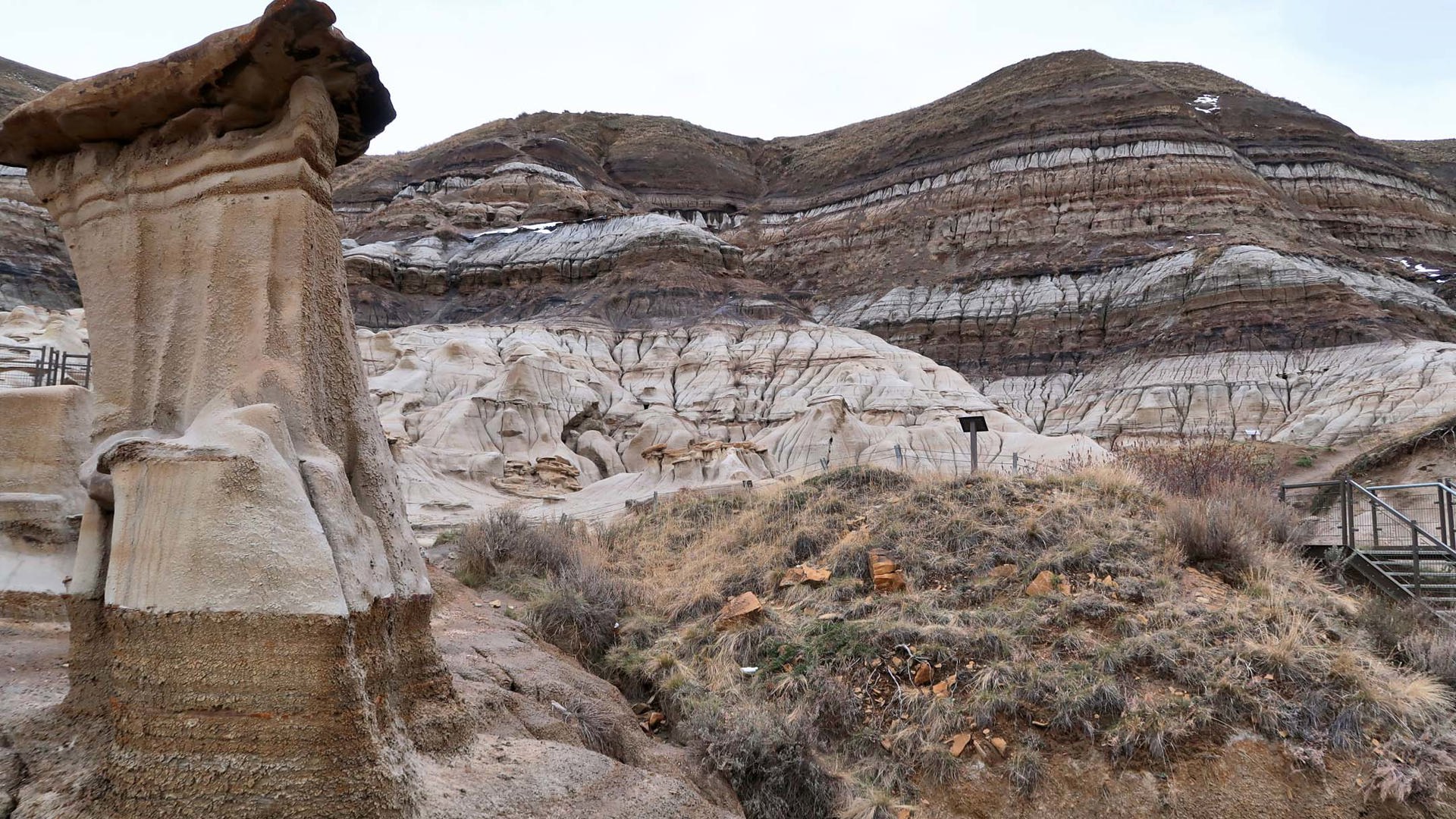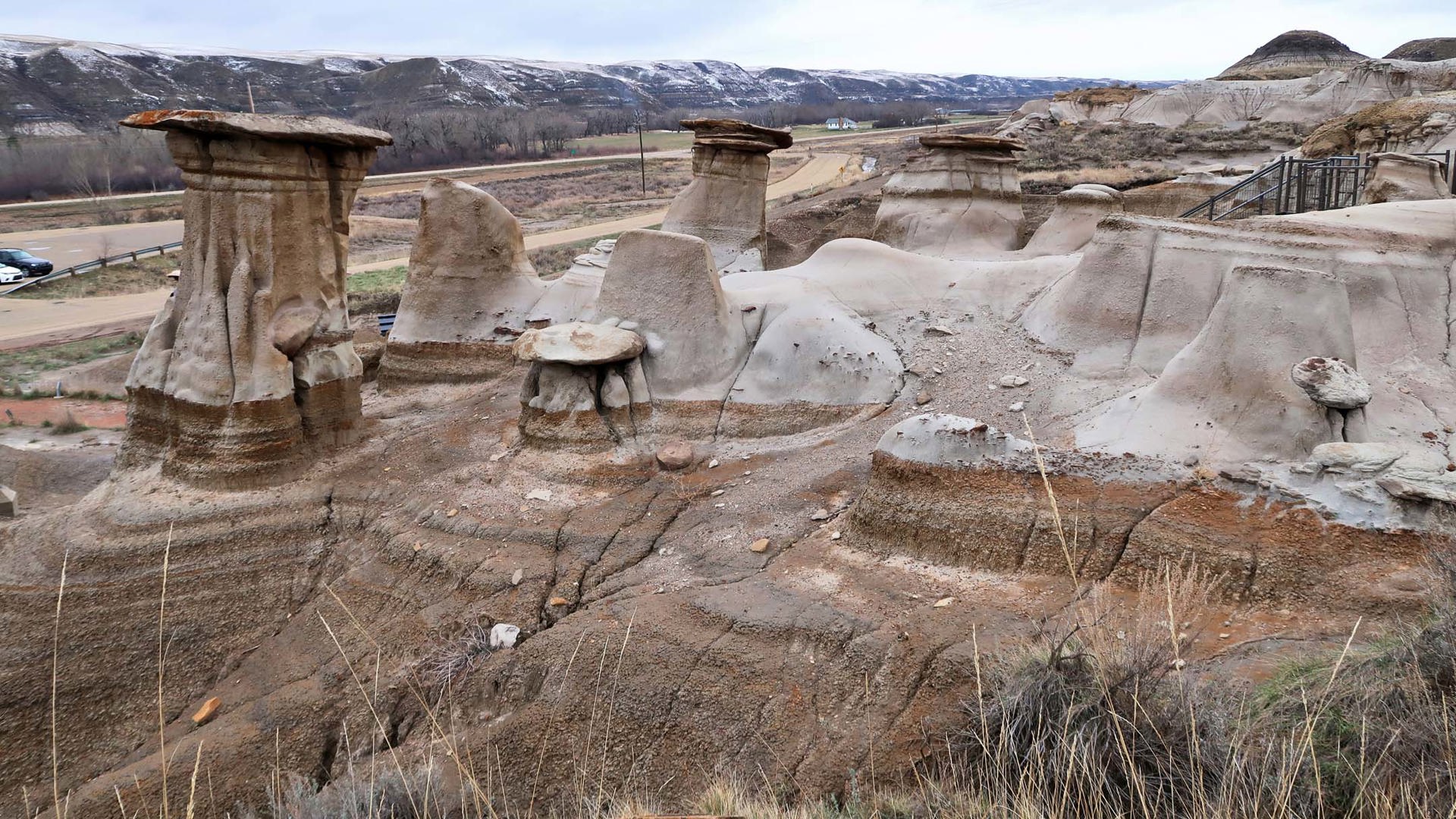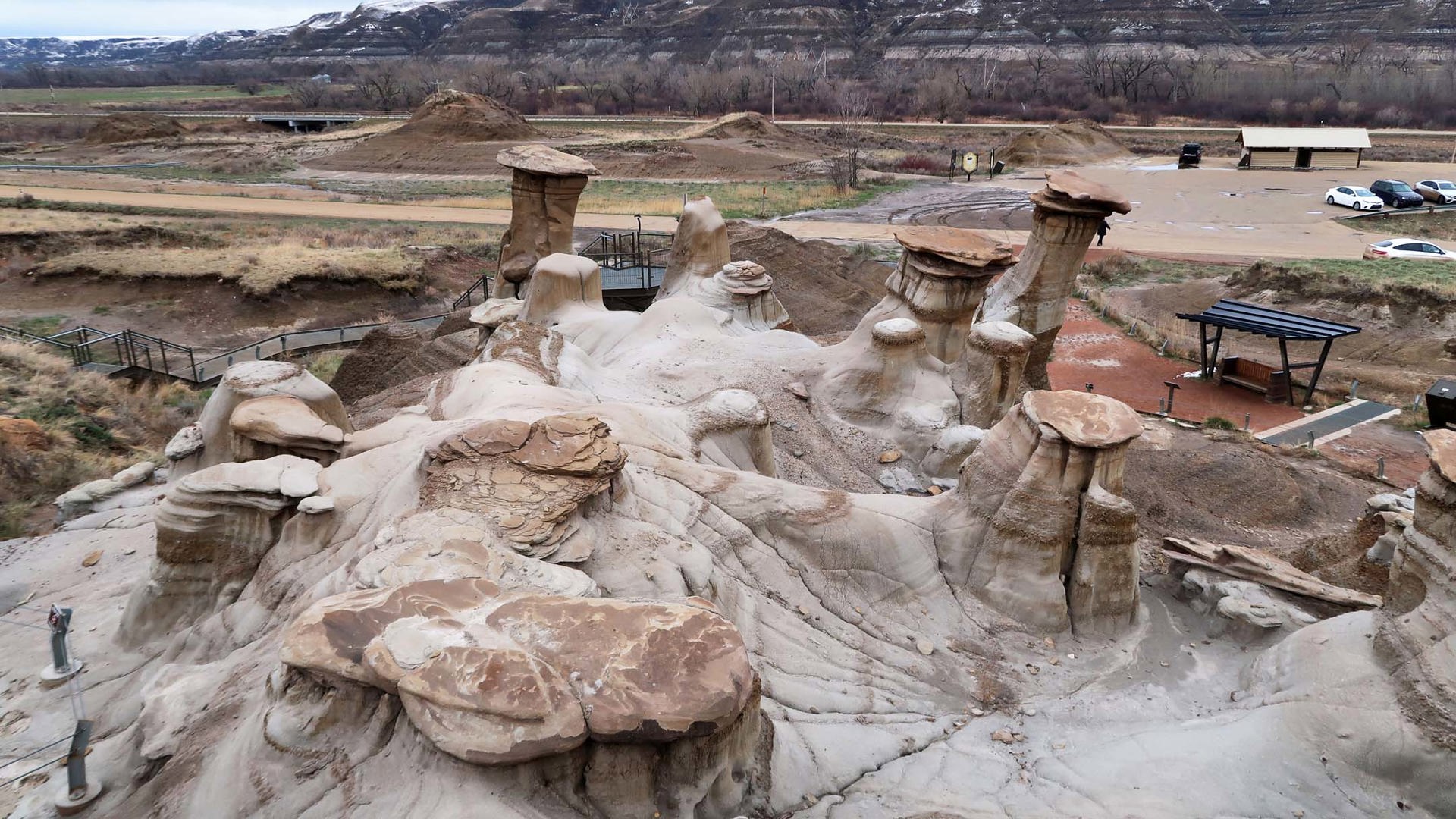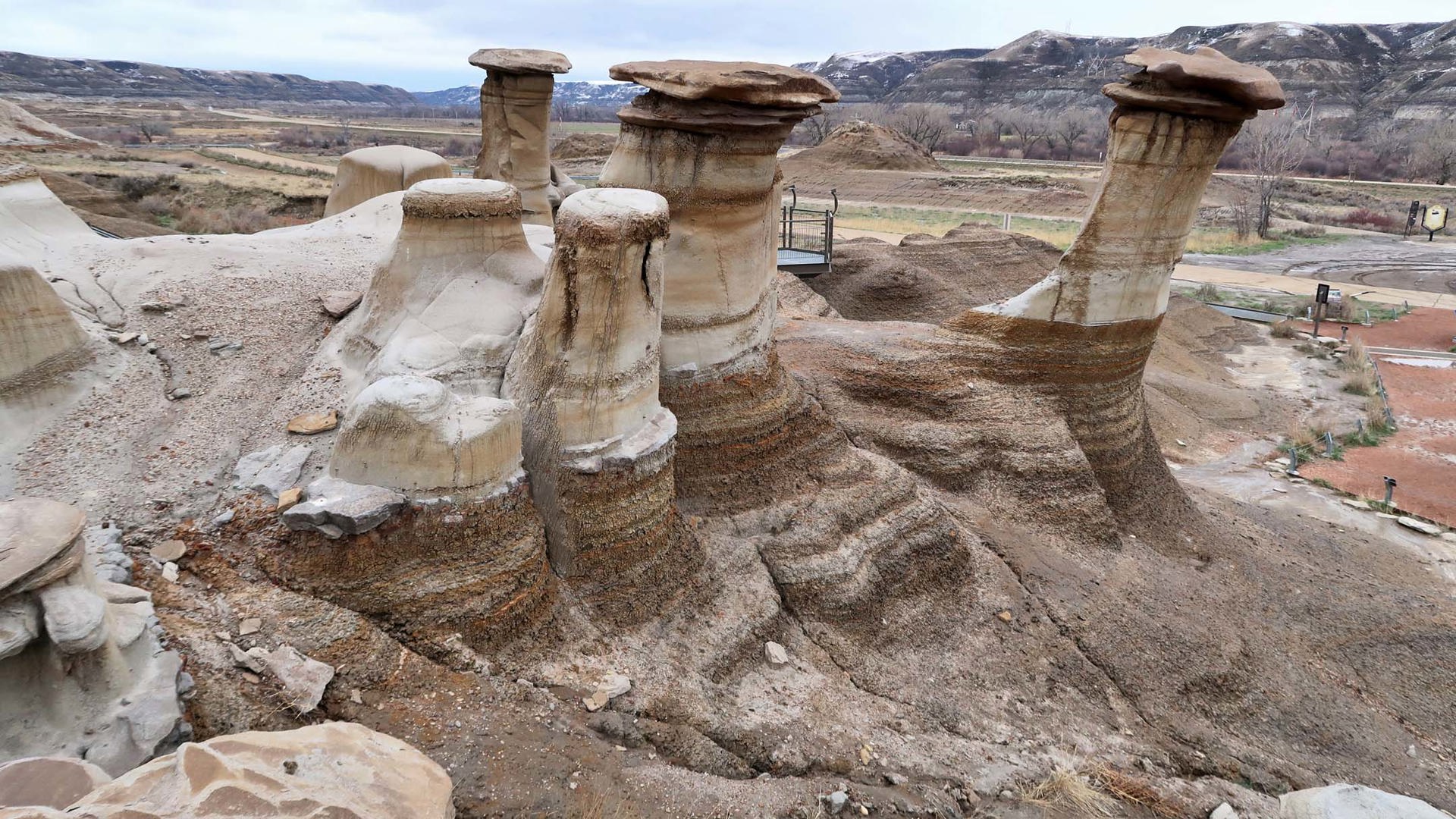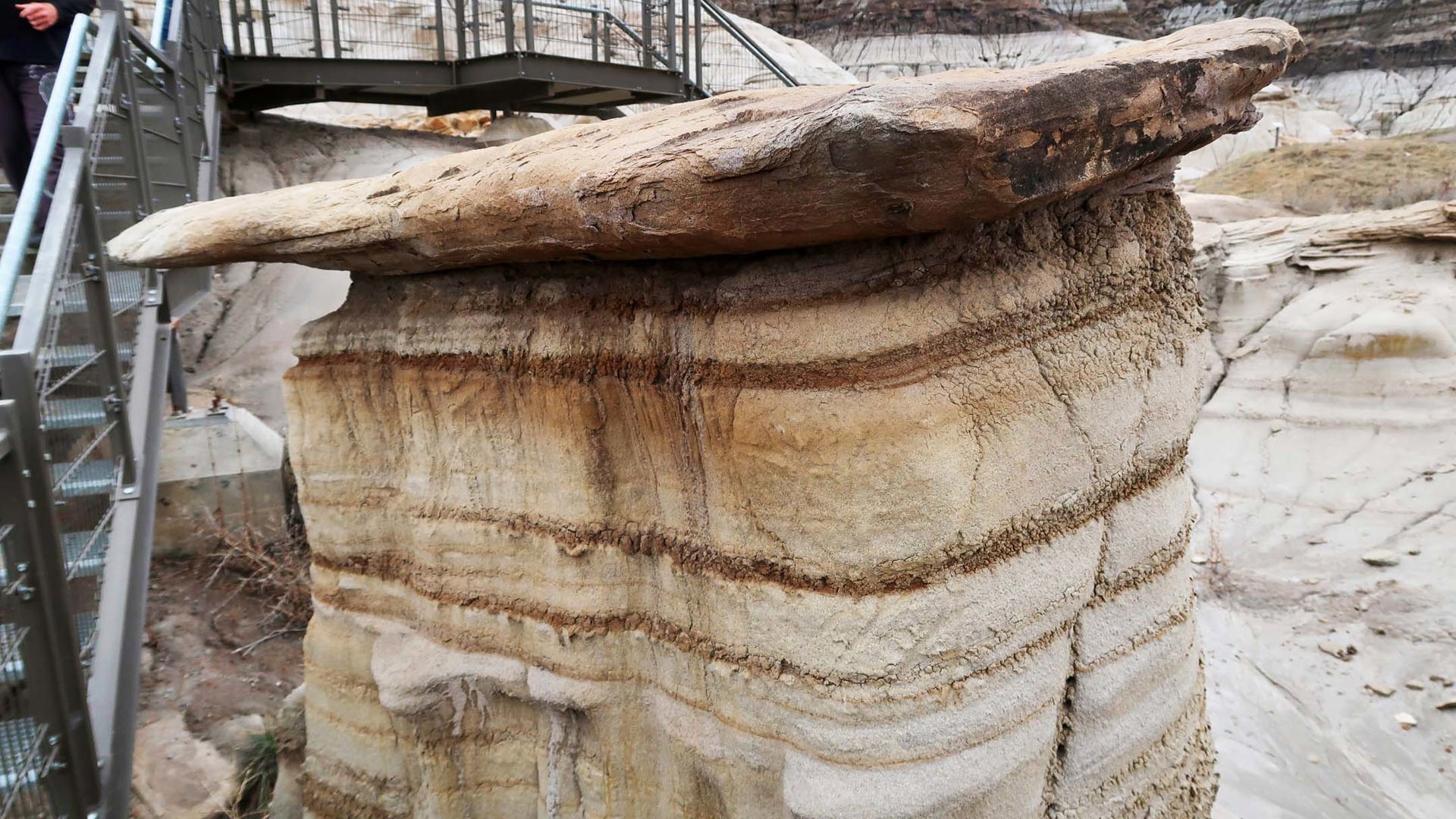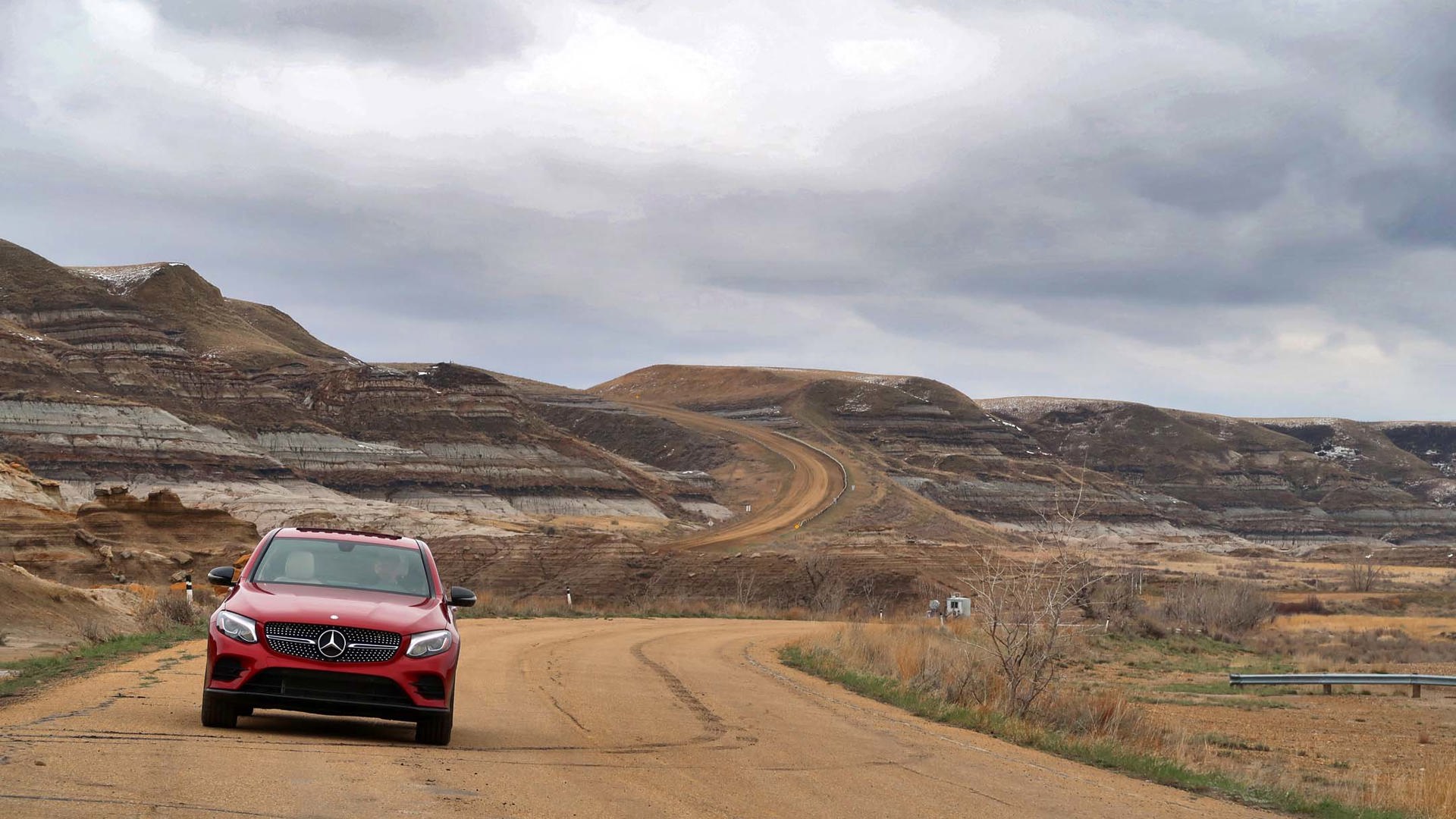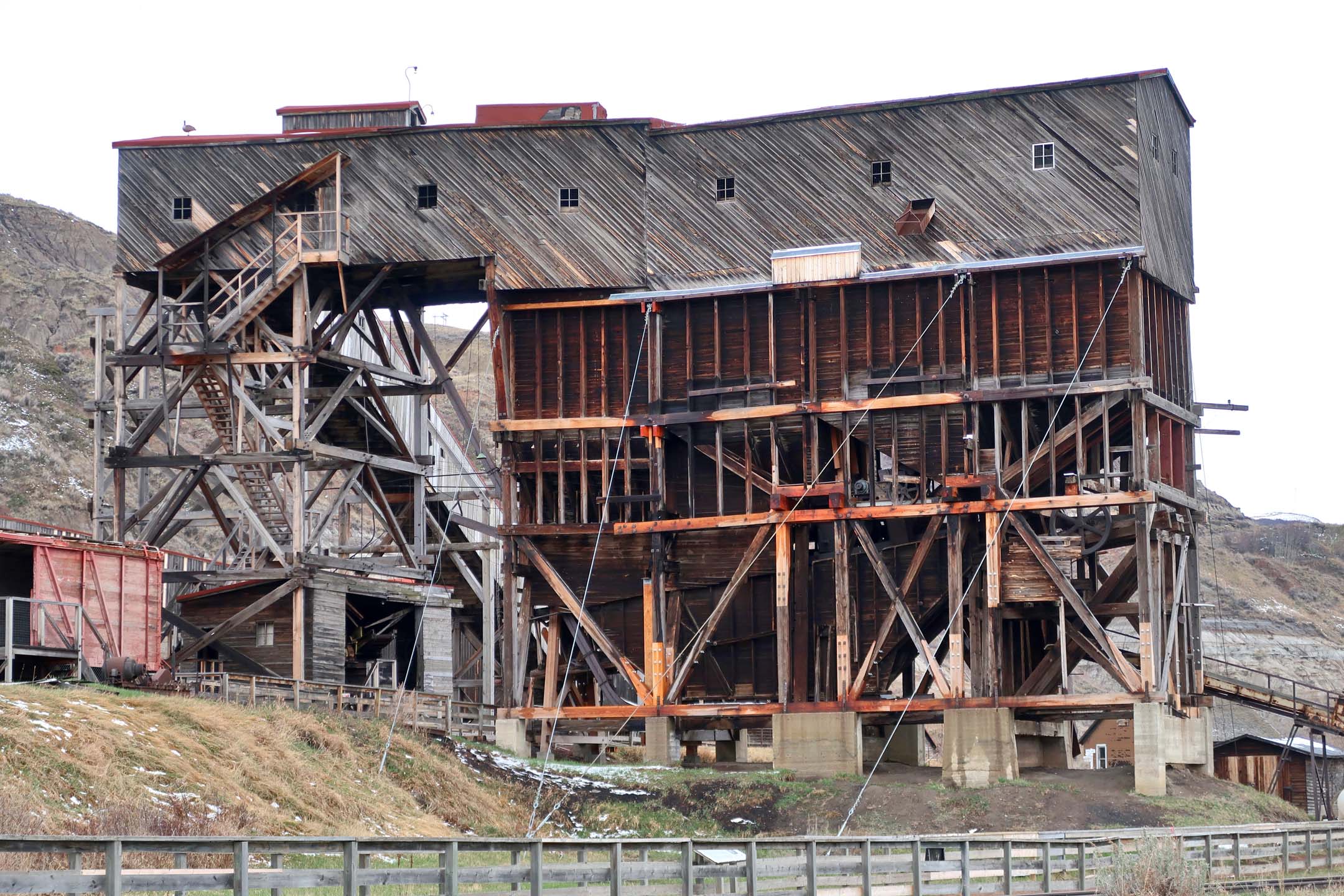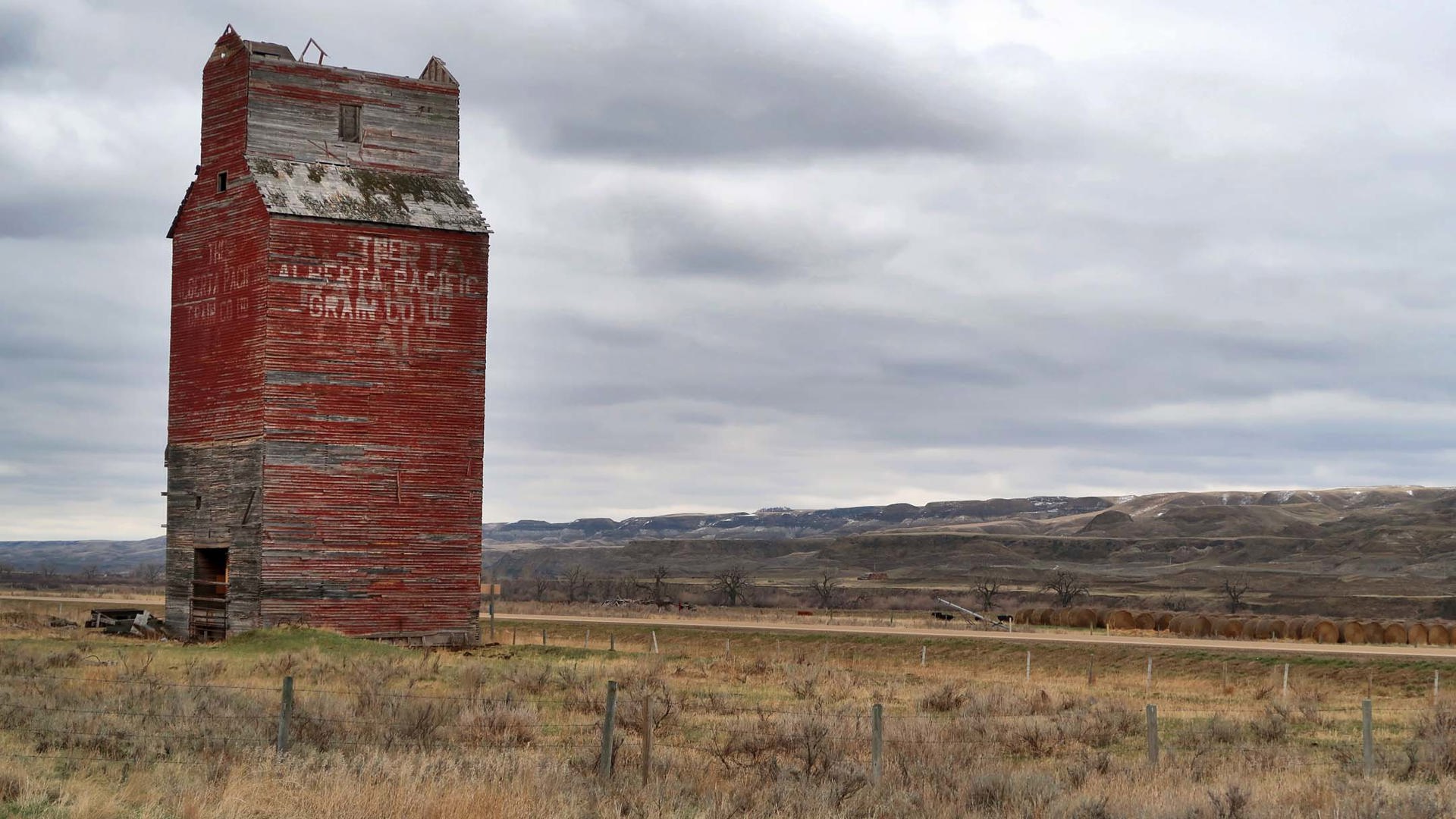Calgary is a great place, and I’ve done the touristy things there: visited Stampede, drank a cold one or two on a Stephen Avenue Walk patio, and almost conquered my fear of heights in the Calgary Tower.
But armed with a new Mercedes-Benz GLC300 Coupe, I was sent out to explore. It wasn’t exactly pioneering on my part, since the route was pre-selected for me, and I only had one day to get it all done. Still, it was worth the rush. There is so much history in this area, along with more than a few “last of its kind”, and my trek was a discovery of glimpses into the province’s fascinating past.
 Clem T. GoFur, mascot of Torrington
Clem T. GoFur, mascot of Torrington
I started at the Fairmont on 9th Ave SW, which originally opened as the Palliser Hotel in 1914. I headed north on Highway 2 toward Edmonton, turning east on 27 toward Torrington. In that town, I stopped to snap a shot of mascot Clem T. GoFur, atop his stone pedestal. Alas, it was too early in the season to visit the Gopher Hole Museum. The museum has holes, and it has gophers – some 71 of them, all stuffed and arranged in dioramas that get as bizarre as a gopher priest with a gopher angel hovering over his head. And you were just going to go see the dinosaur stuff, huh?
Some 140 kilometres out of Calgary, I stopped for a snack in Trochu, at the town’s five-acre Arboretum. The land had belonged to Dr. A.J.S. Hay, the town’s medical doctor, who had been an avid gardener. A decade after his death in 1973, the gardens were restored and the Arboretum’s newer trees planted. The jewel is Hay’s historic house, still in mostly original condition and now containing the Sweetgrass Café. Owner Suzanne Sinclair serves lunch and dinner three days a week for drop-ins, and “24/7” as she says if you make reservations.
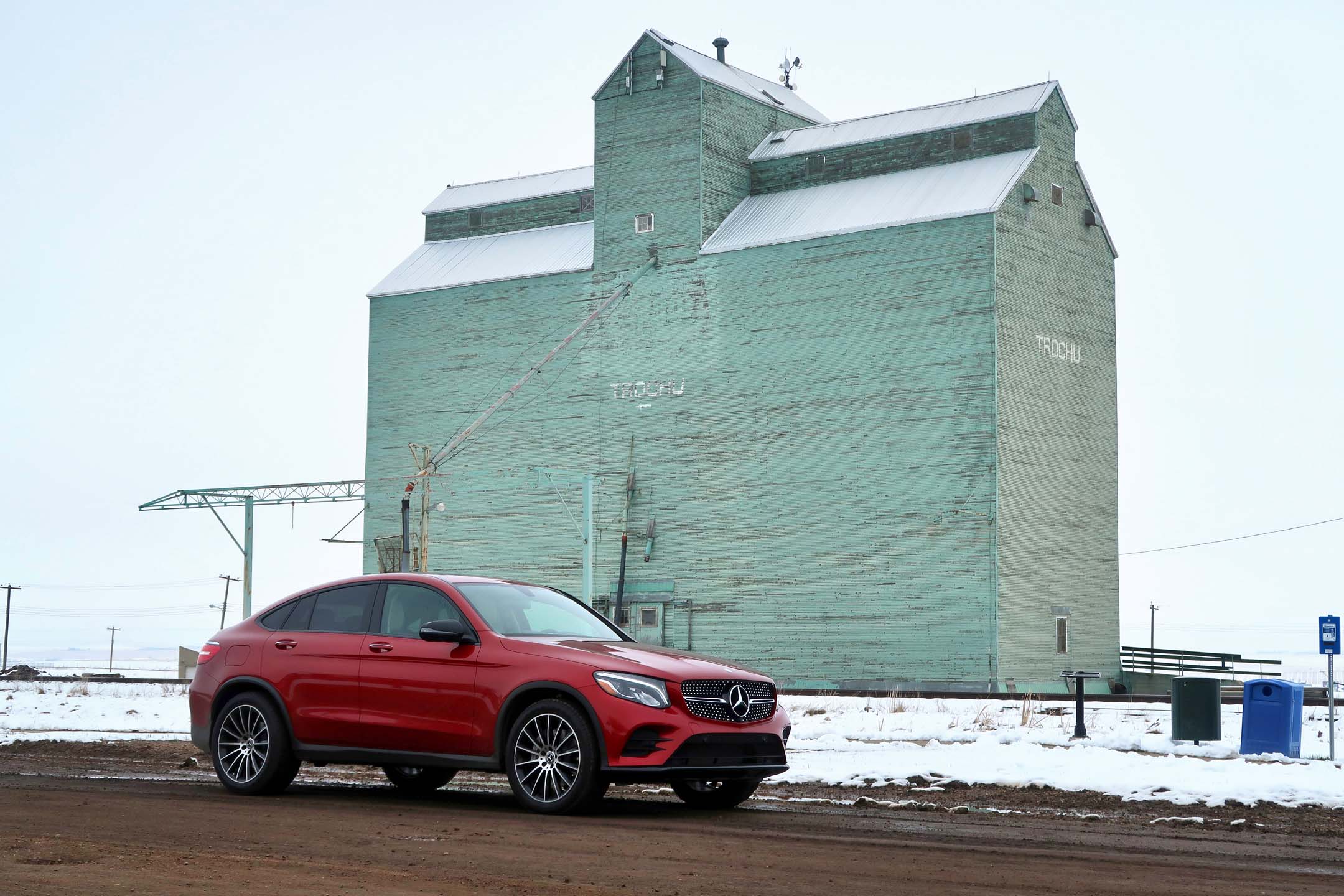 The town of Trochu celebrated its 100th anniversary in 2011
The town of Trochu celebrated its 100th anniversary in 2011
Fortified with some homemade crème brûlée, I stopped to snap a photo of the GLC Coupe alongside Trochu’s grain elevator. Built in the 1970s, it’s no longer in use and is the last of a number of wooden elevators that used to line the town’s railway tracks. At one time there were some 1,700 wooden elevators in Alberta. Oversized metal or concrete elevators are now the norm, and only about 120 wooden structures remain, virtually all out of service.
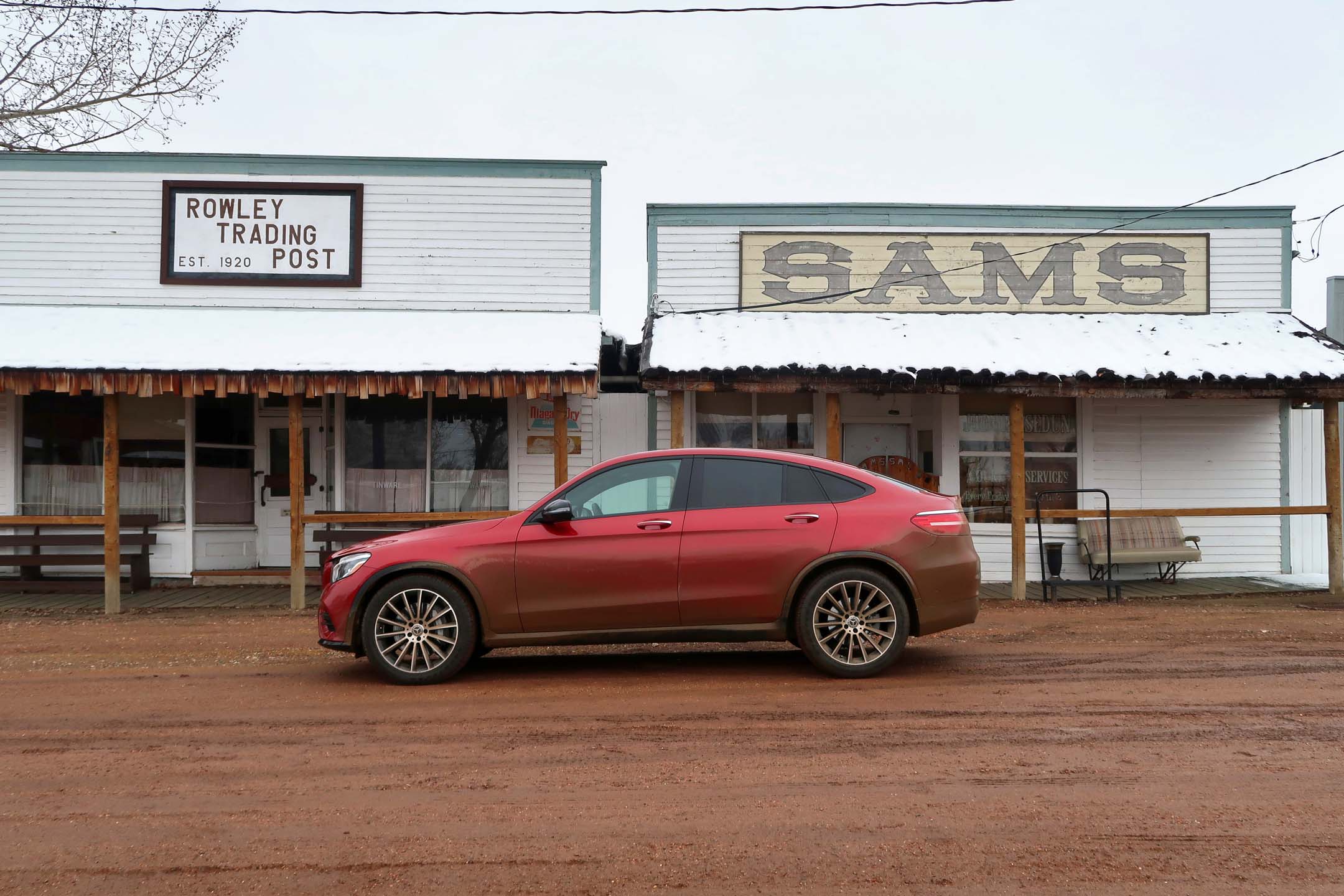 Rowley features a ghost-town main street
Rowley features a ghost-town main street
I found three more elevators in Rowley, along with the “ghost town” main street. Rowley was on its way out in the 1970s when a group of residents fought to save it as a tourist attraction. That worked for a while and even brought in some movie crews, but when the trains stopped coming to Rowley, so did the tourists.
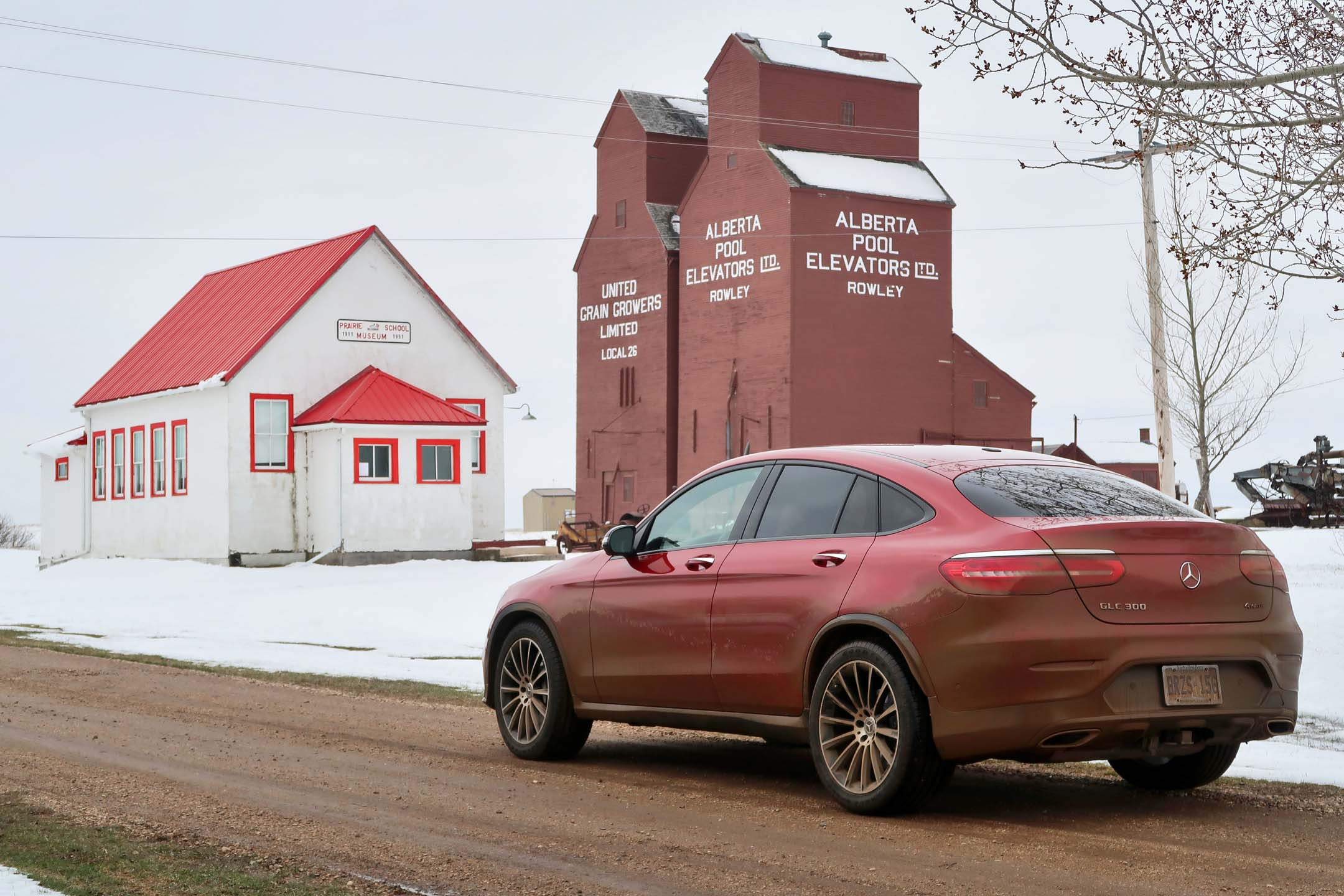 Rowley features a ghost-town main street
Rowley features a ghost-town main street
The town now has just eight residents, but they make the most of it. One Saturday each month, Sam’s Saloon opens for Pizza Night, which can draw some 150 people from neighbouring towns. The pizzas are made by hand in the community hall, and beer and dancing are both on tap. But the saloon was locked, and the Benz and I had more to see, so we headed toward Drumheller, some 38 kilometres south.
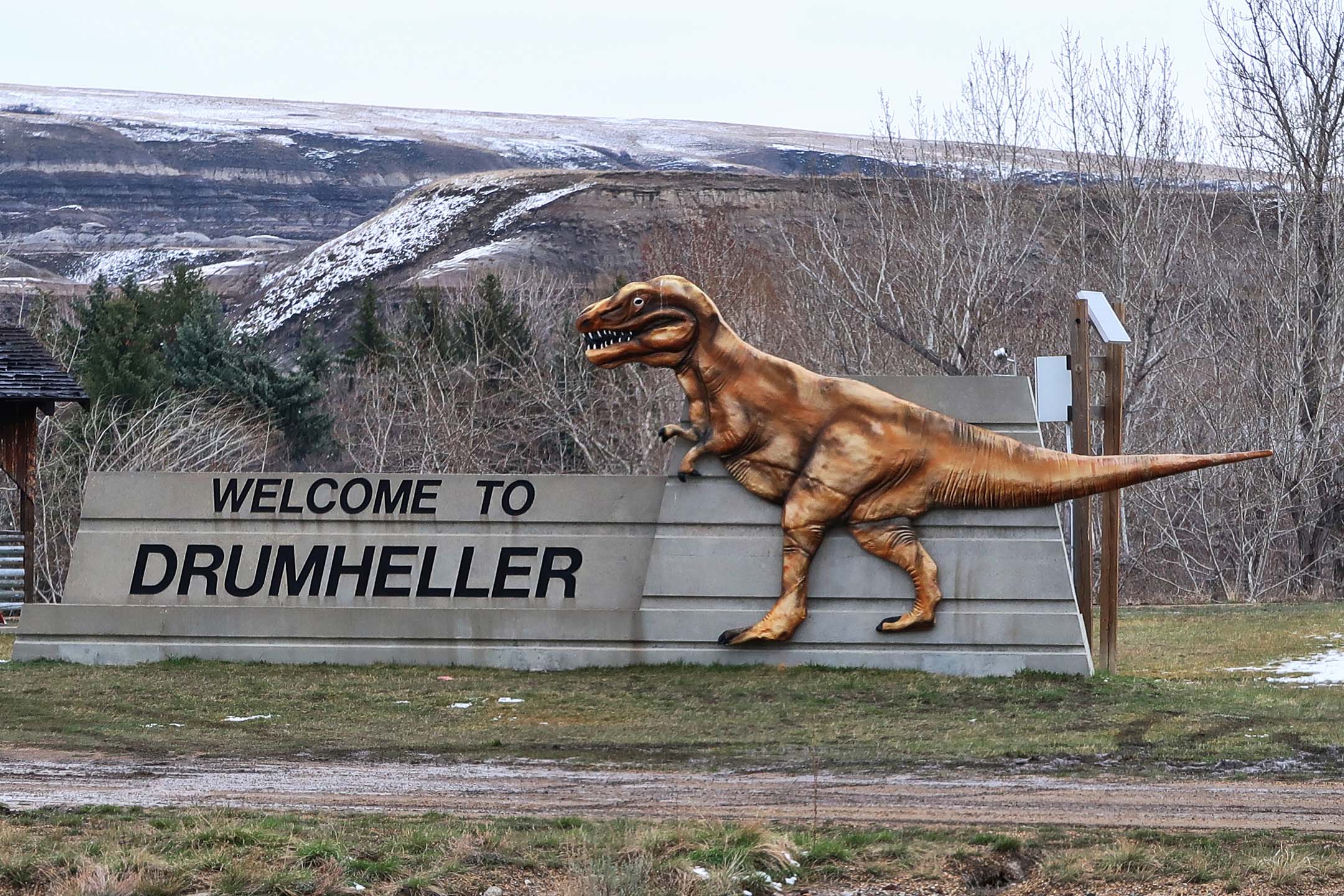 Drumheller is famous for its dinosaurs
Drumheller is famous for its dinosaurs
Drumheller needs no introduction, being Ground Zero for Alberta’s oldest history and the dinosaurs buried in its rock, many of which now reside in the Royal Tyrrell Museum, some six kilometres away. Drumheller’s downtown is great for walking, with its combination of historic and modern buildings, and neon-coloured dinosaurs on the corners. But it was lunchtime, and I had another 15 kilometres to go to Wayne.
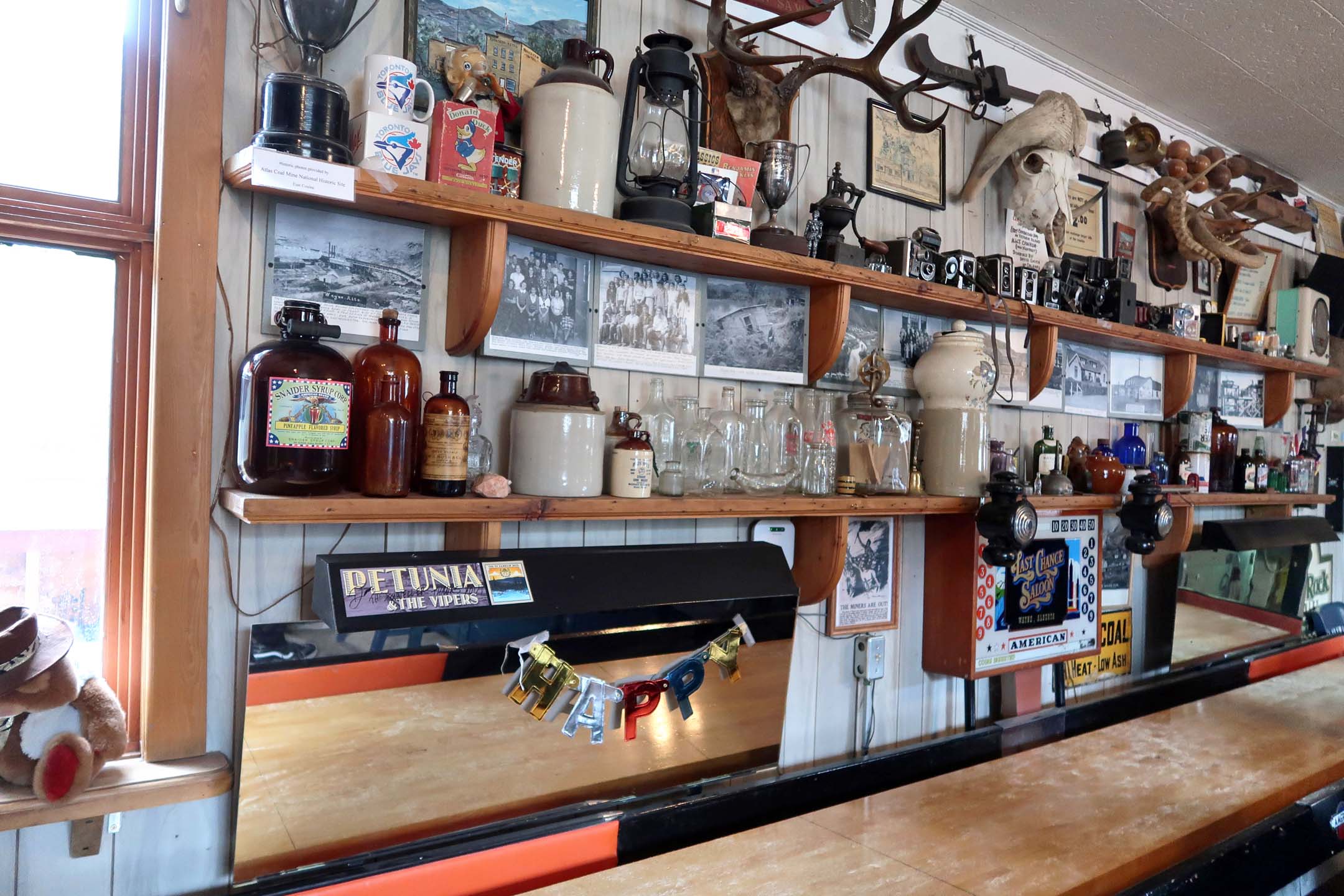 It takes a while to see everything in the Last Chance Saloon
It takes a while to see everything in the Last Chance Saloon
Wayne was a coal town, but when the mines closed Wayne did too, and it now has about 30 permanent residents. To get to it, you take a winding valley road that crosses eleven one-lane, wooden-plank bridges. Between bridges nine and ten, you turn for the Last Chance Saloon and Rosedeer Hotel.
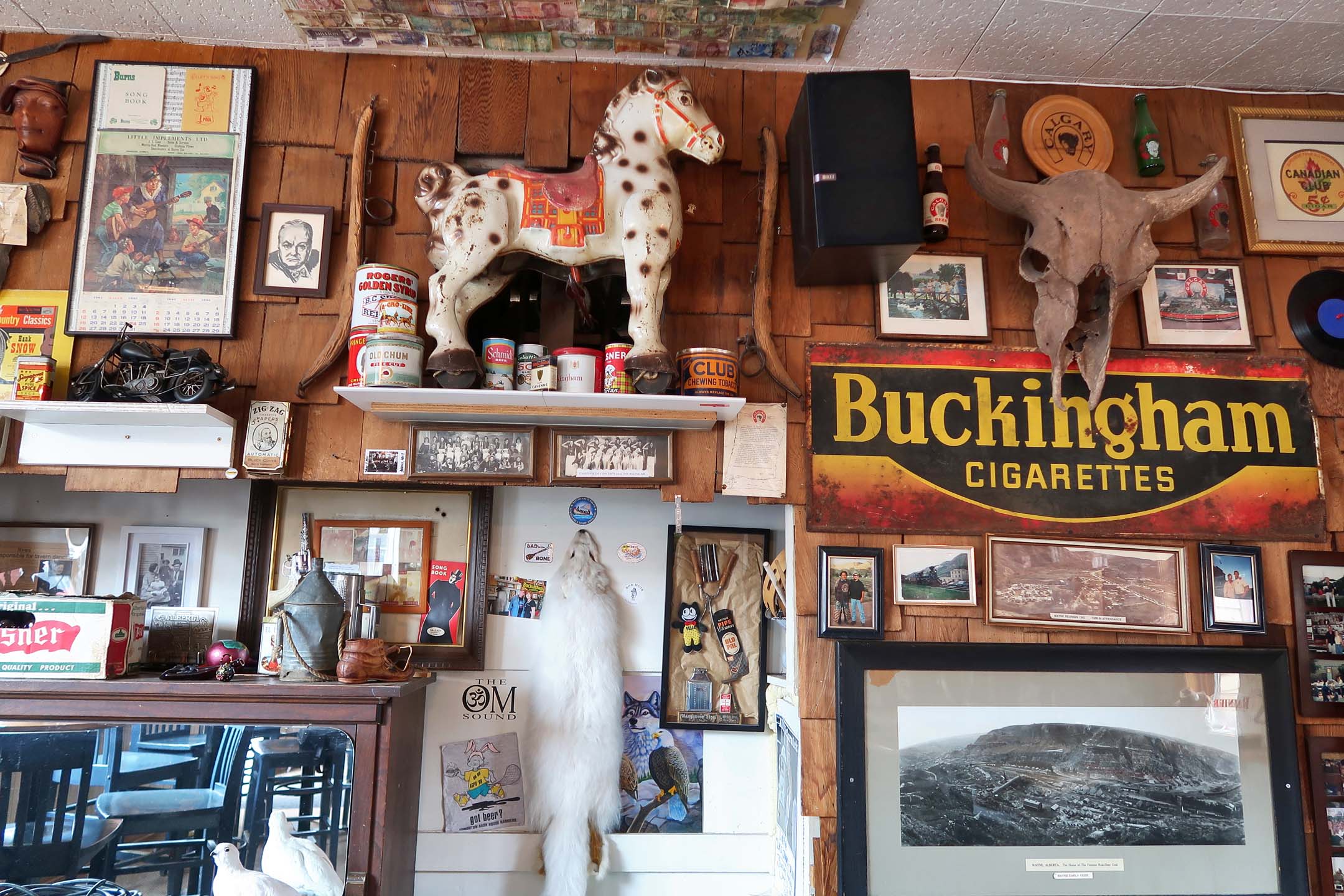 It takes a while to see everything in the Last Chance Saloon
It takes a while to see everything in the Last Chance Saloon
Plan to stay a while at the saloon, because it takes a long time to see everything on the walls: tools, cow skulls, cigarette ads, stuffed fish, and three bullet holes supposedly put there by a bartender when some patrons didn’t want to pay for their drinks.
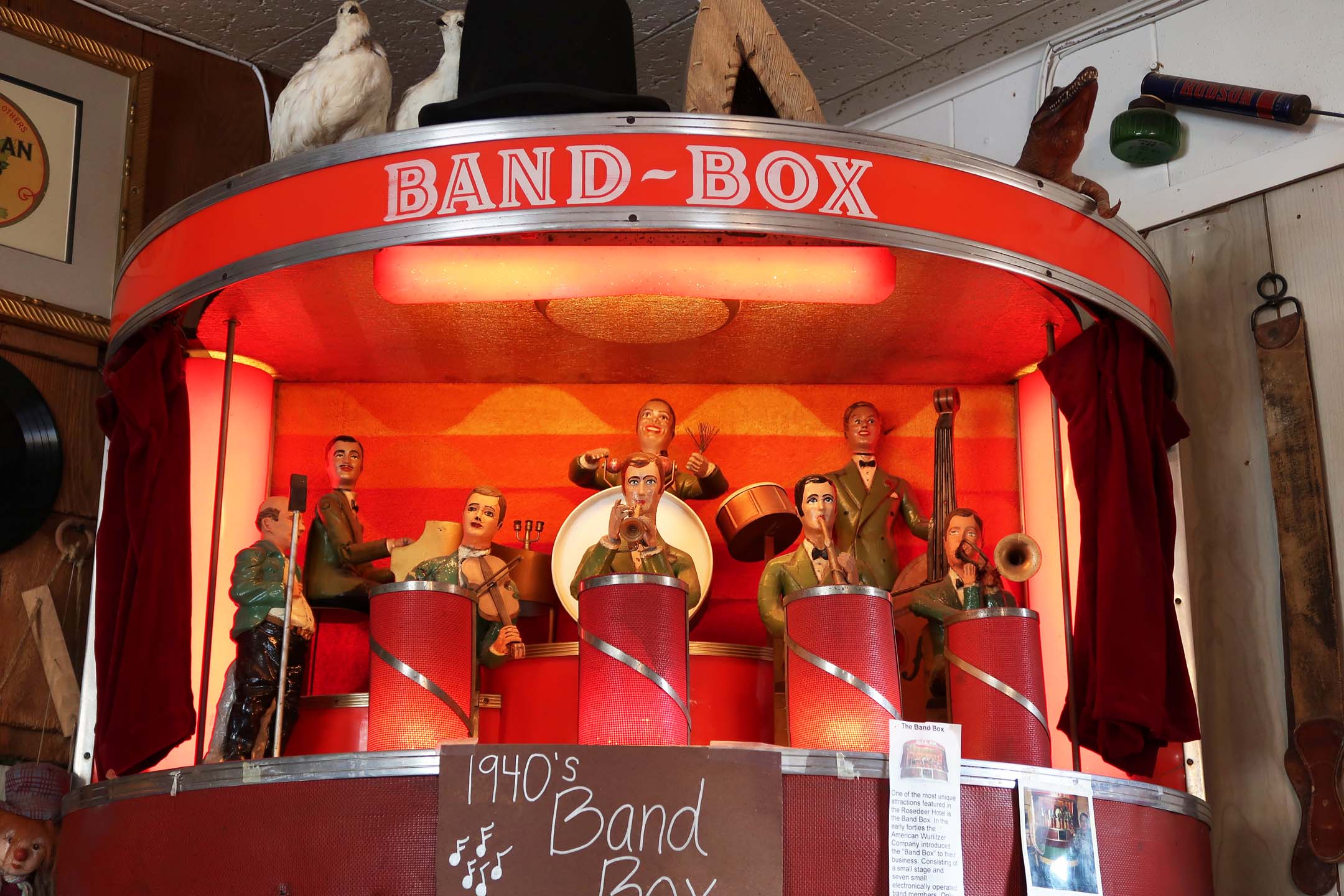 Don't miss the Band Box at the Last Chance Saloon
Don't miss the Band Box at the Last Chance Saloon
The menu is your average pub fare, but if you order the steak, you’re led out back to the barbecue to grill it yourself to your liking. And ask the staff to fire up the Band Box. Made in the 1940s by jukebox company Wurlitzer, the device contains seven miniature musicians who play their instruments. Only two were sold in Canada and the other was lost in a fire, making this another Alberta survivor.
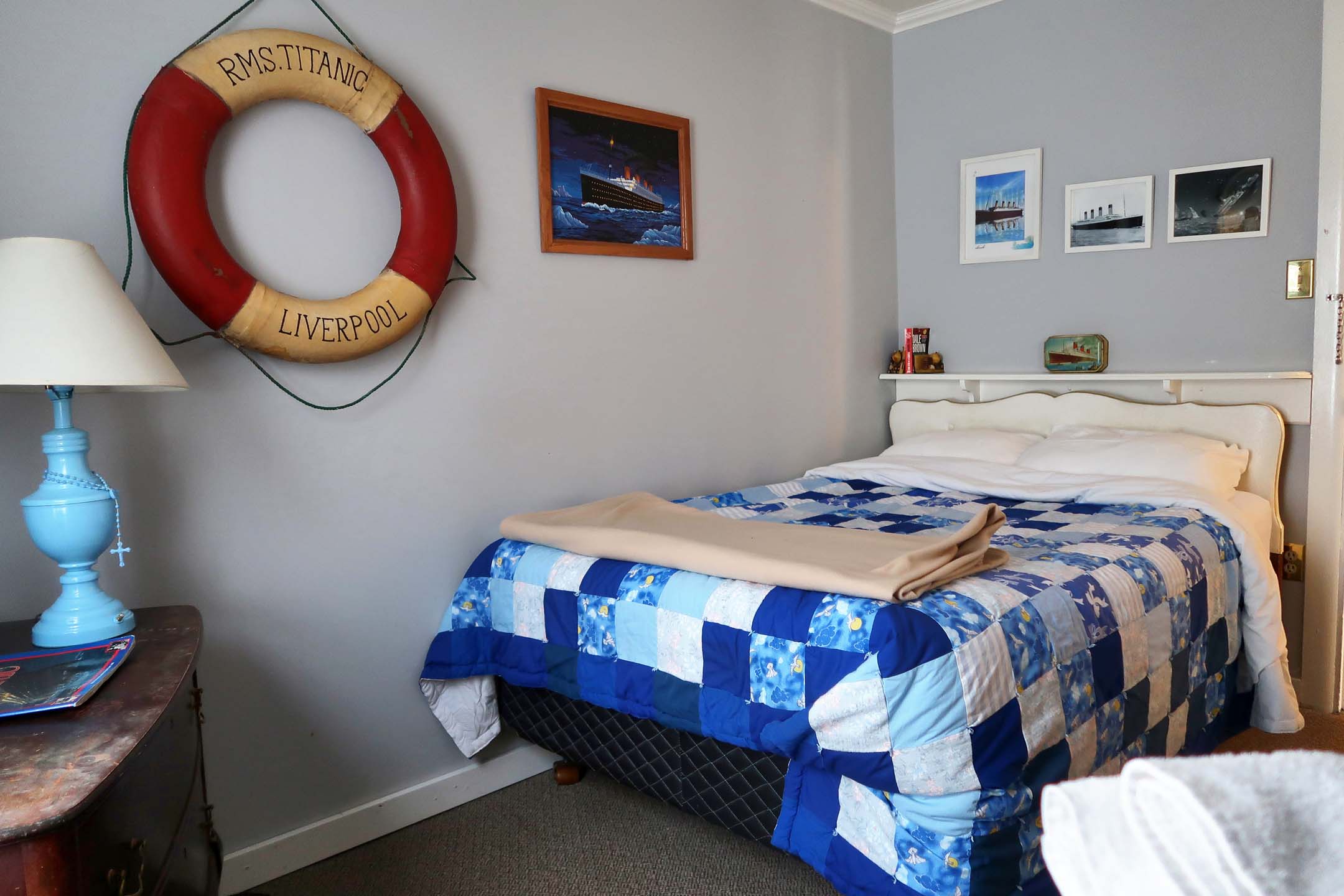 The rooms in the Rosedeer Hotel are themed with donated items
The rooms in the Rosedeer Hotel are themed with donated items
Built in 1913, the hotel and saloon are the only remaining buildings from the mining days. You can still stay the night, and $65 gets you a themed room, such as golf, music, or the Titanic. Be warned, though: unless you get the “honeymoon suite,” you’re sharing the toilet and shower with the rest of the guests.
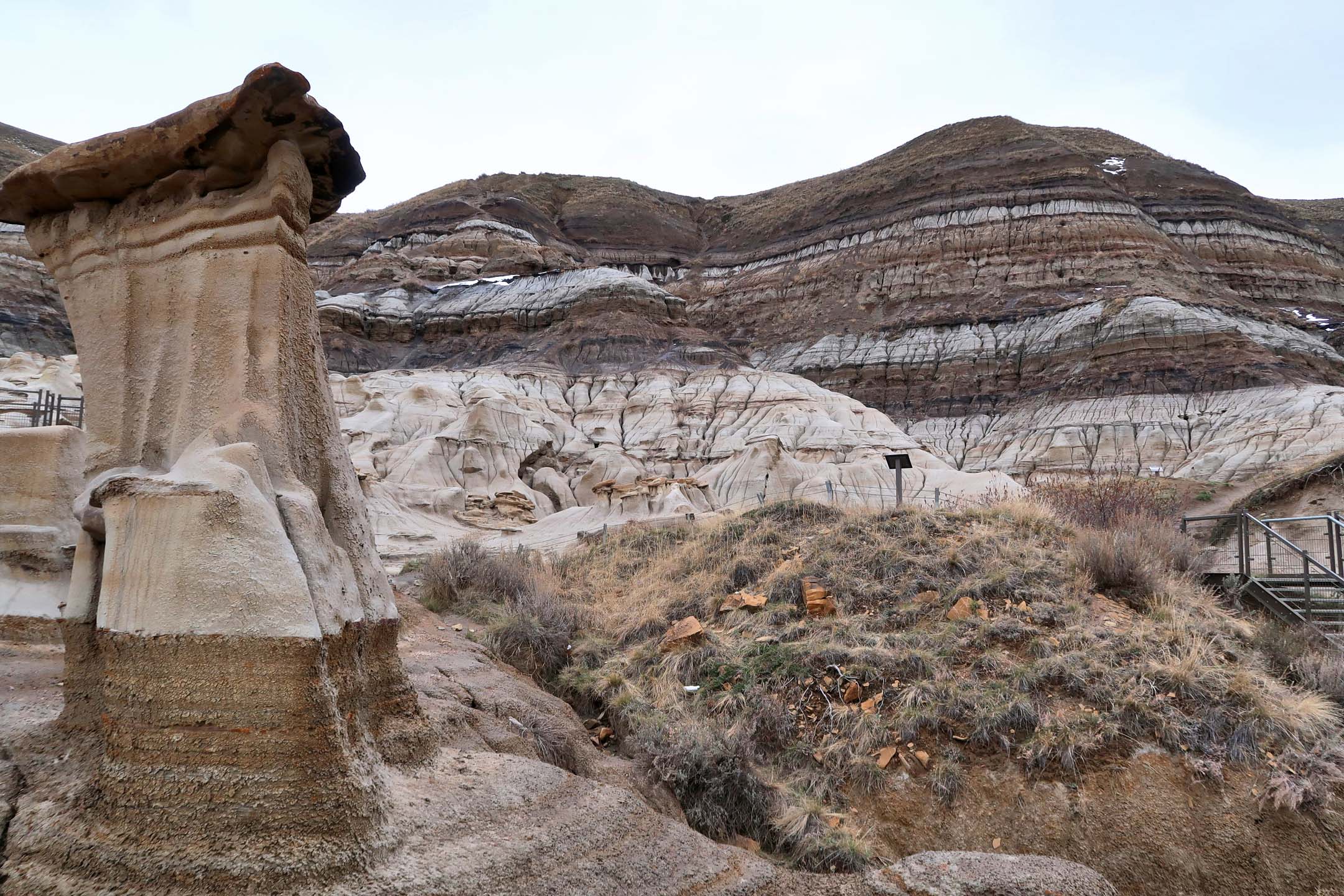 The Hoodoo Rock formations
The Hoodoo Rock formations
The Drumheller area is also home to the Hoodoos, an odd outcropping of soft sandstone topped with harder rock. That harder rock protected the sandstone from erosion, resulting in stone columns that look like mushrooms.
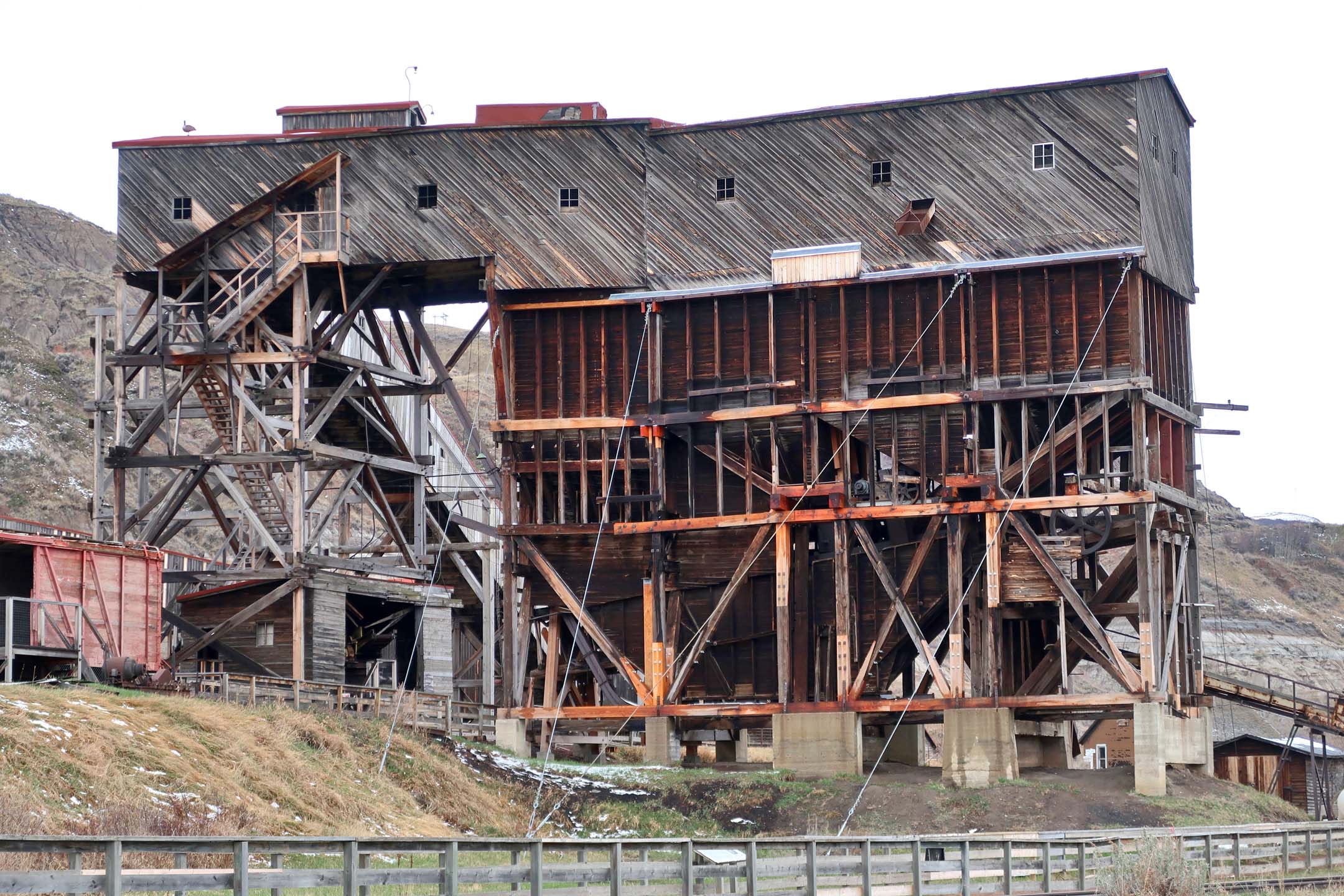 The Atlas Coal Mine National Historic Site
The Atlas Coal Mine National Historic Site
My final stop, after having eaten in what’s left of a mining town, was at a coal mine. The Atlas Coal Mine is a national historic site that offers tours of the tunnel, an “Unmentionables Tour” that includes what miners did on their days off, and a tour of the tipple, the enormous structure outside. The tipple was where coal was sorted and shipped, and like several things I saw during the day, this wooden one is the last one left in Canada.
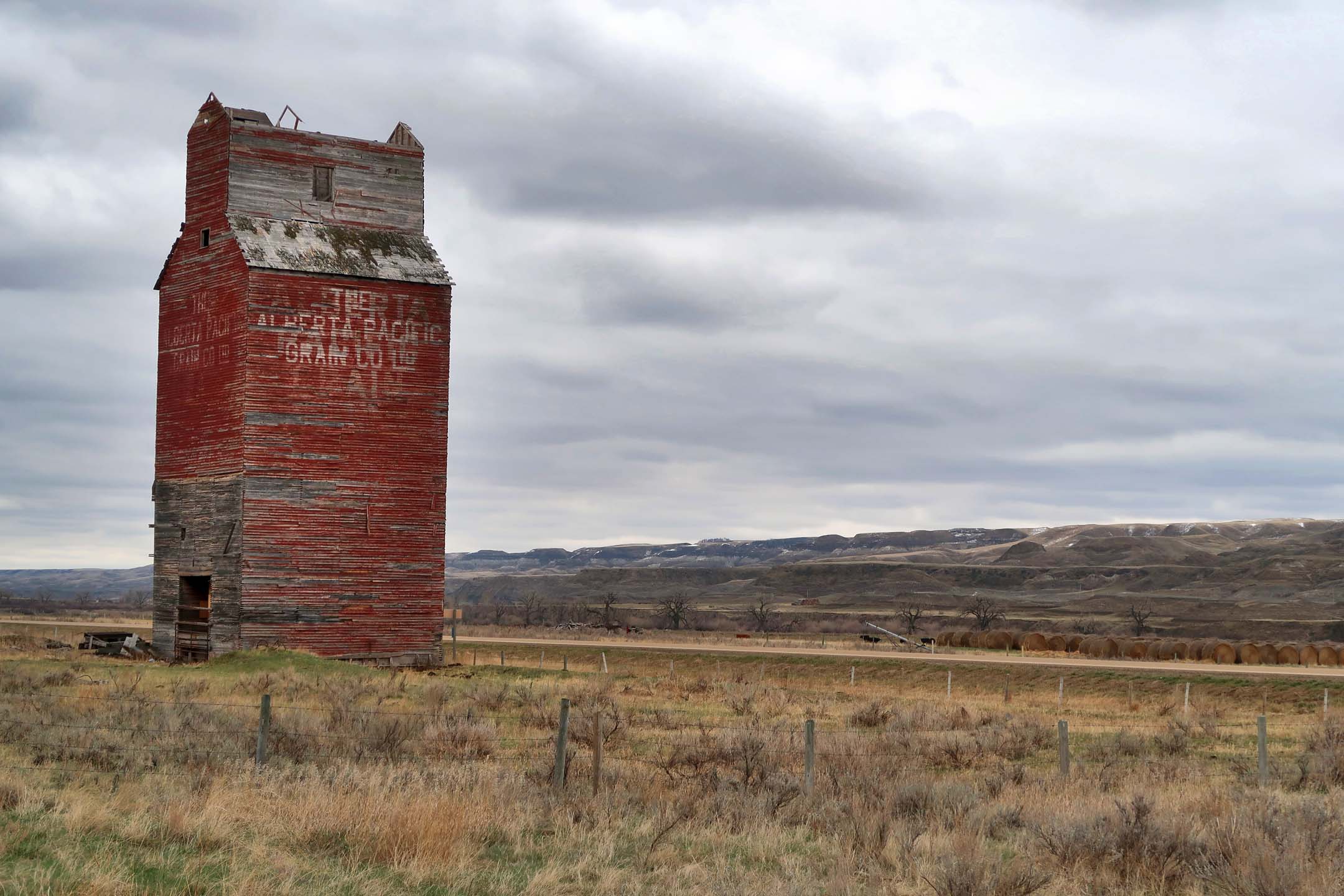 The Alberta Pacific Grain Elevator in Dorothy
The Alberta Pacific Grain Elevator in Dorothy
It was a lot to cover in a day, and it’s definitely a trip I want to make again when I can explore more fully – and line up for a pizza on Rowley’s main street. This is the type of touristy stuff that really counts.
